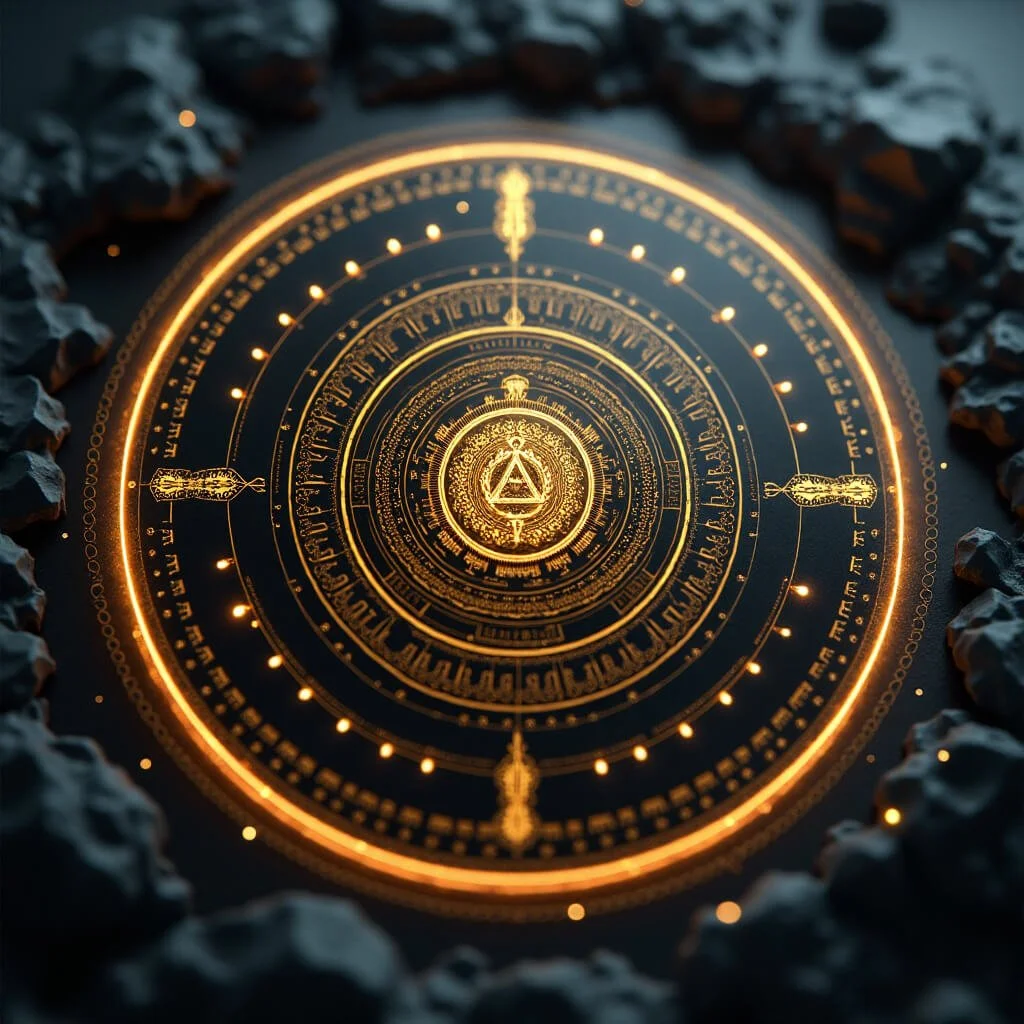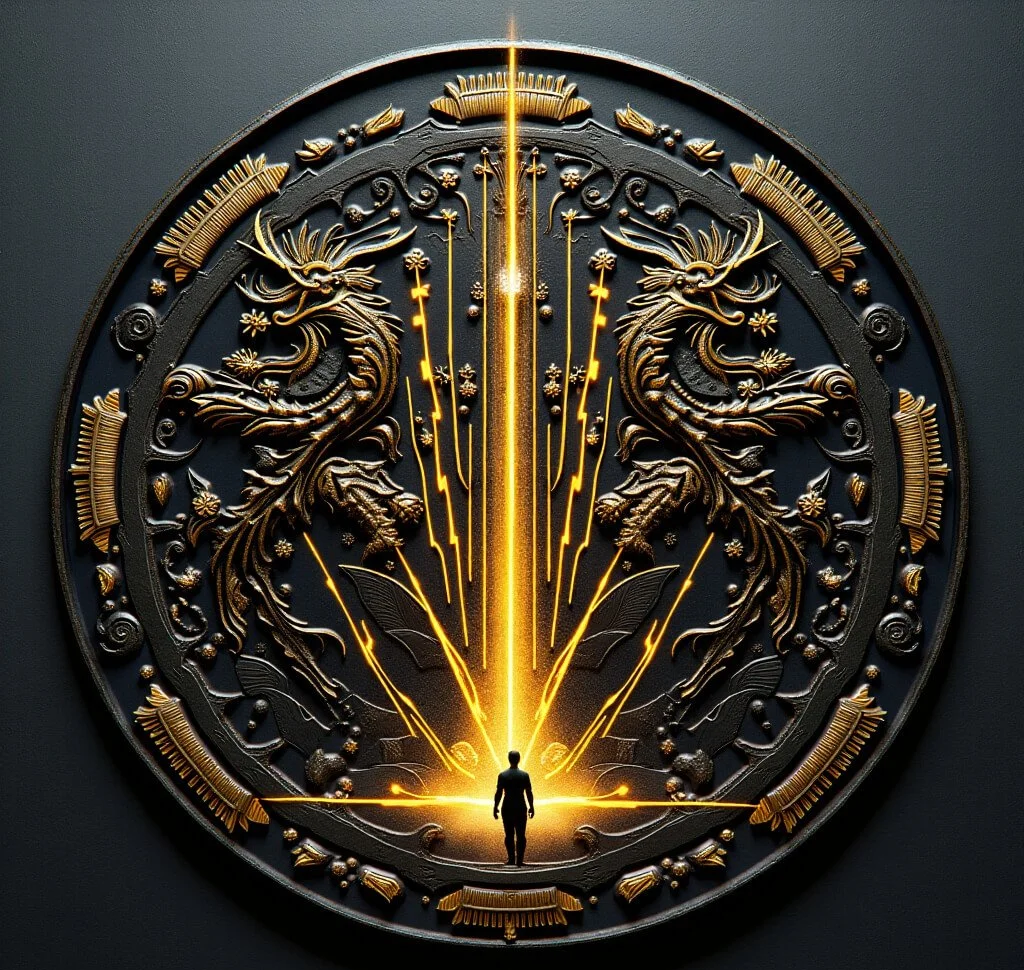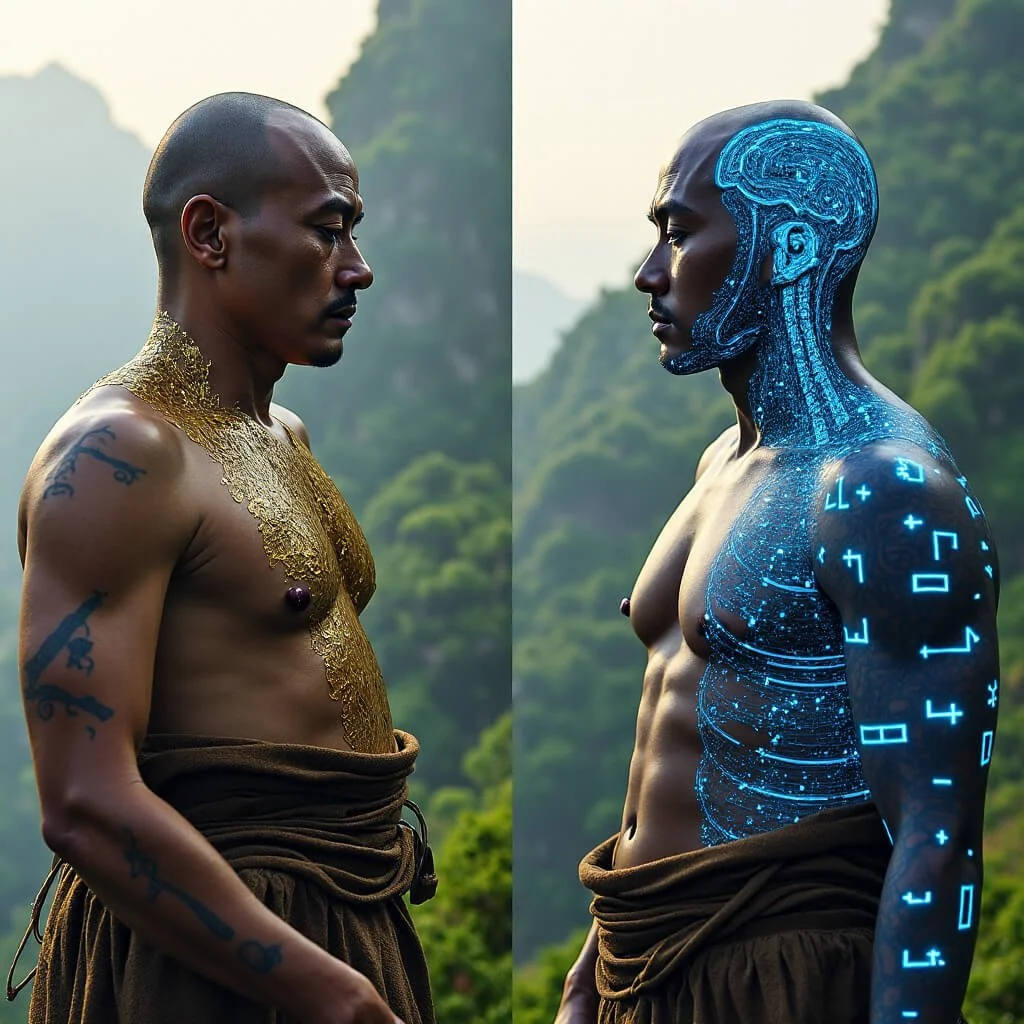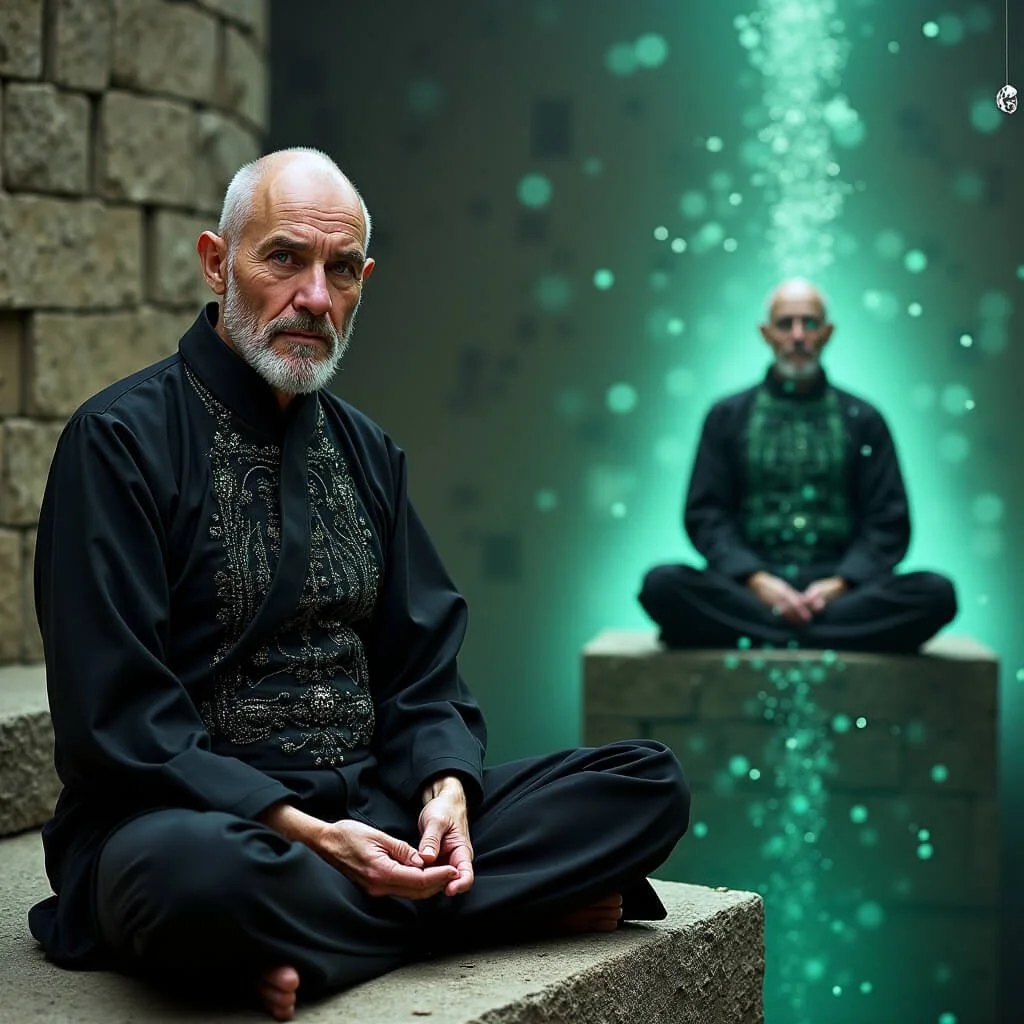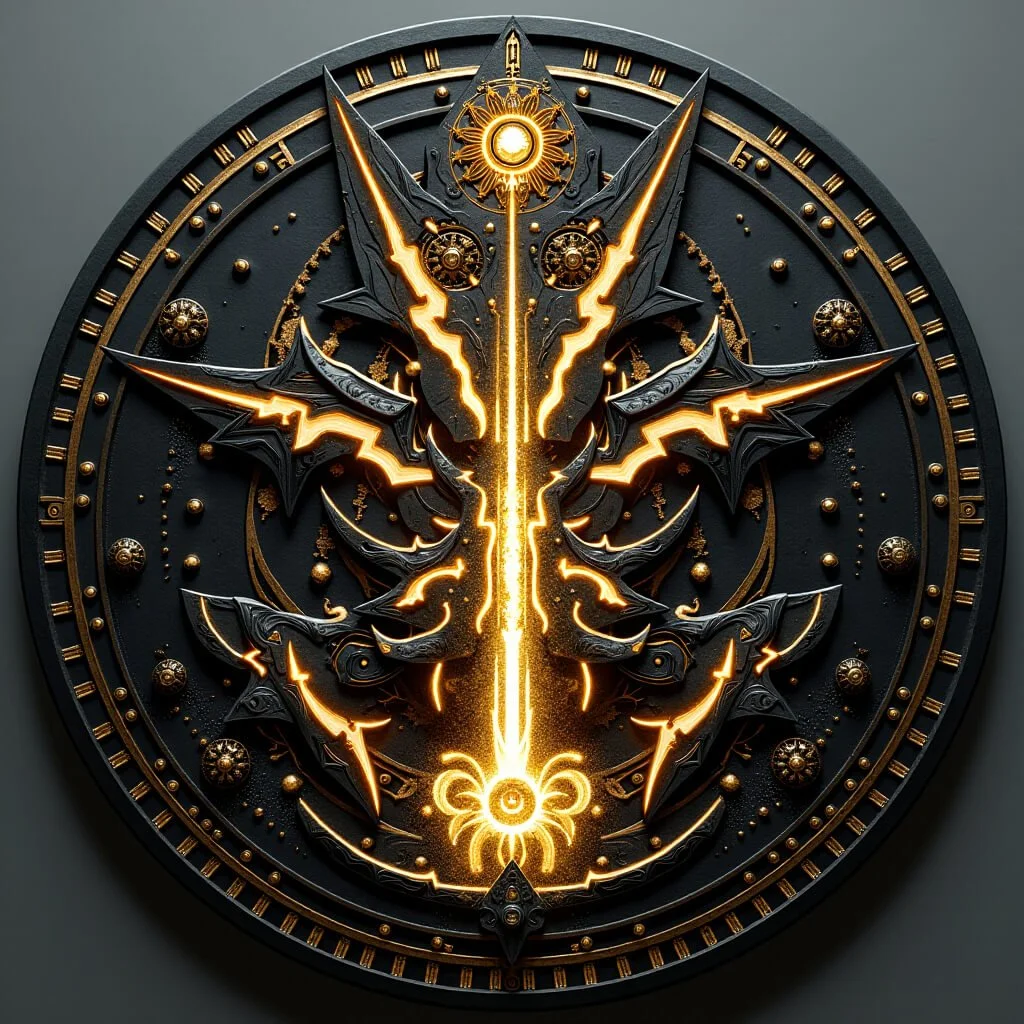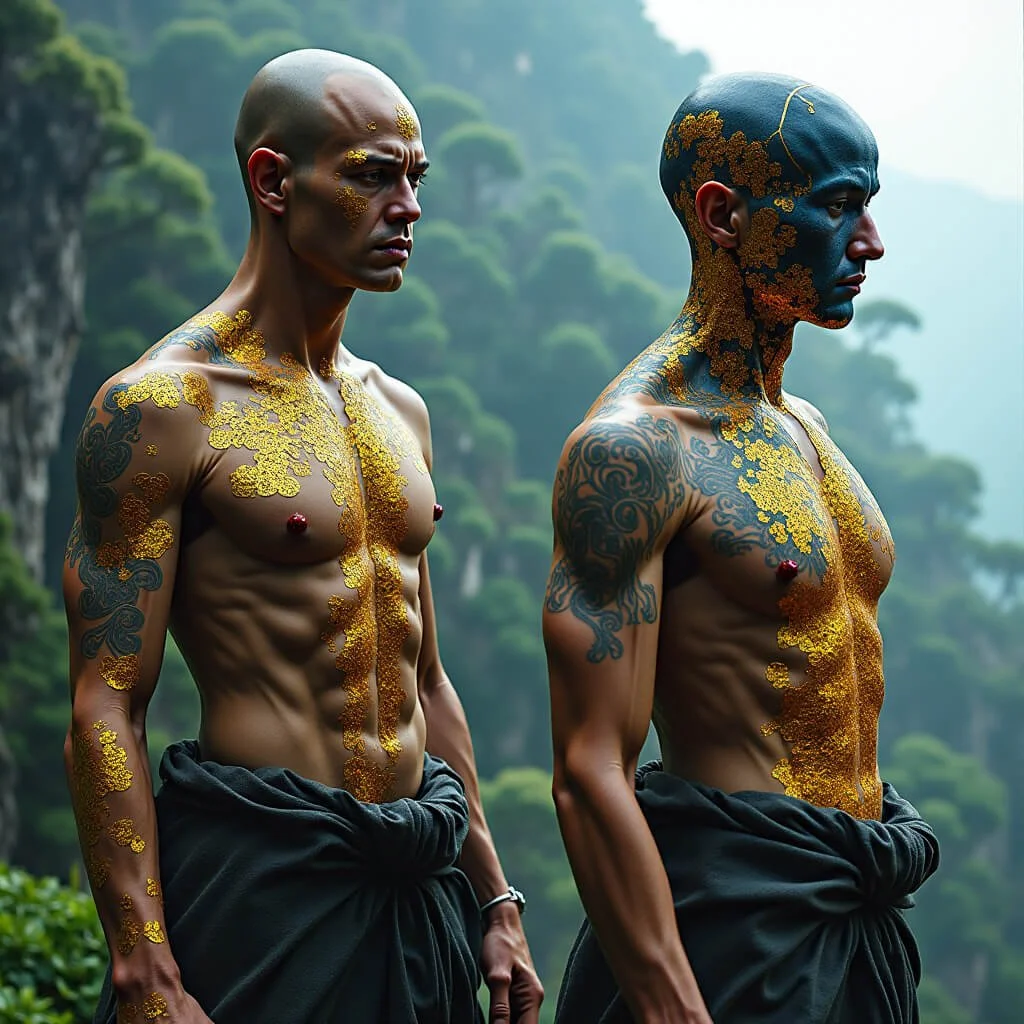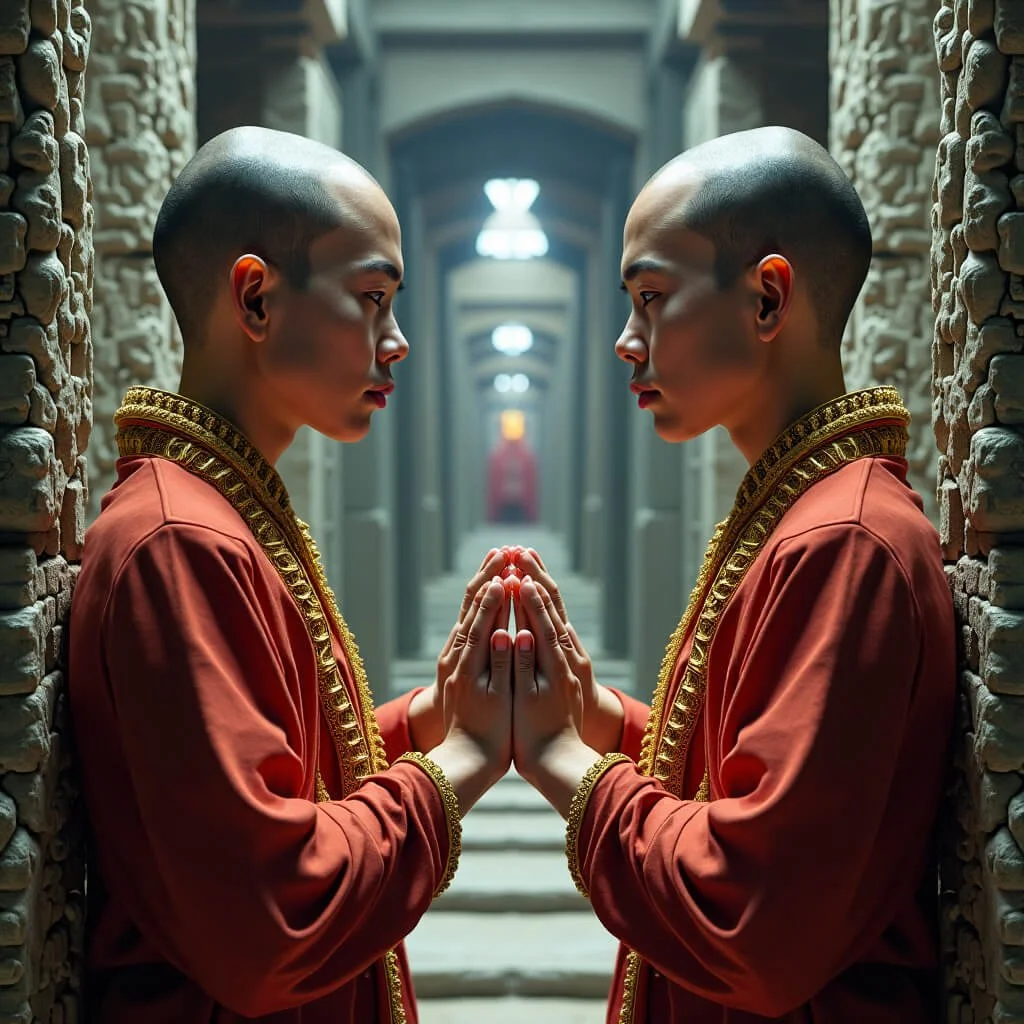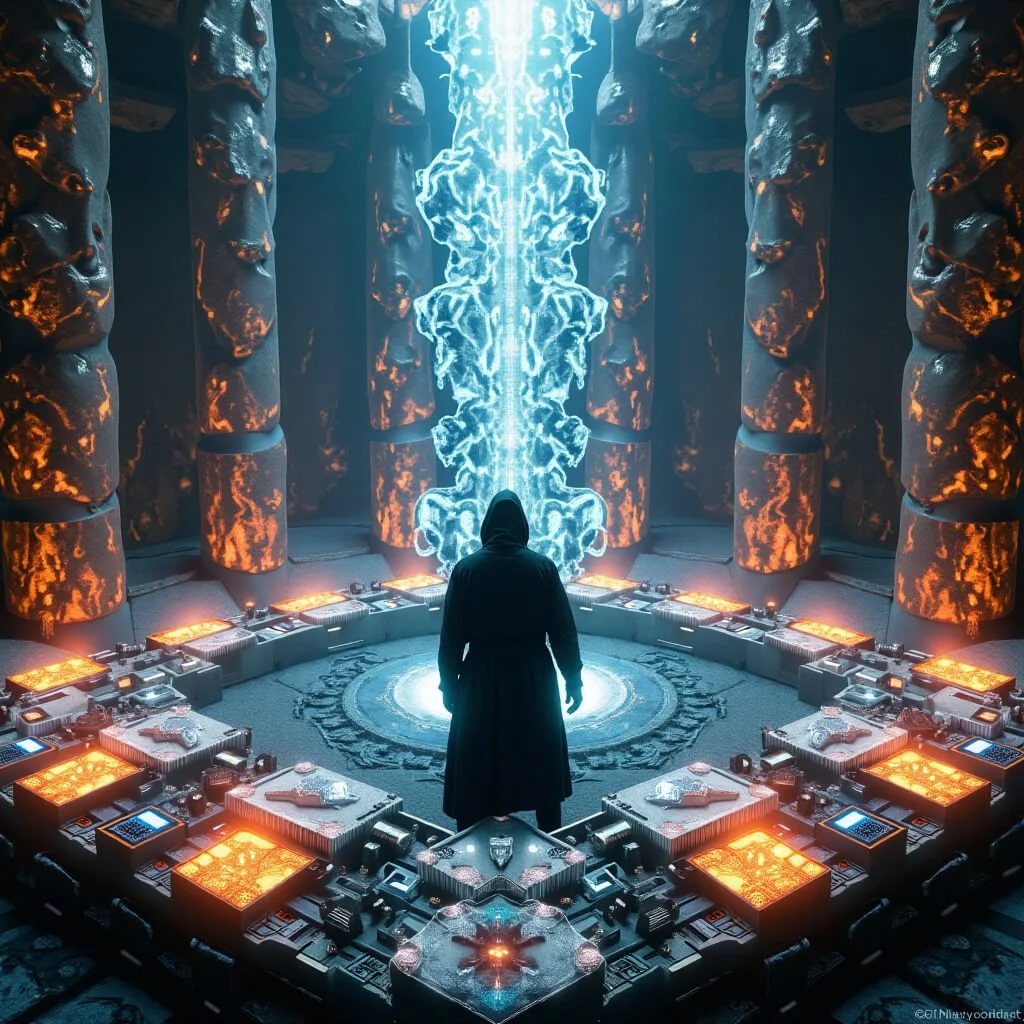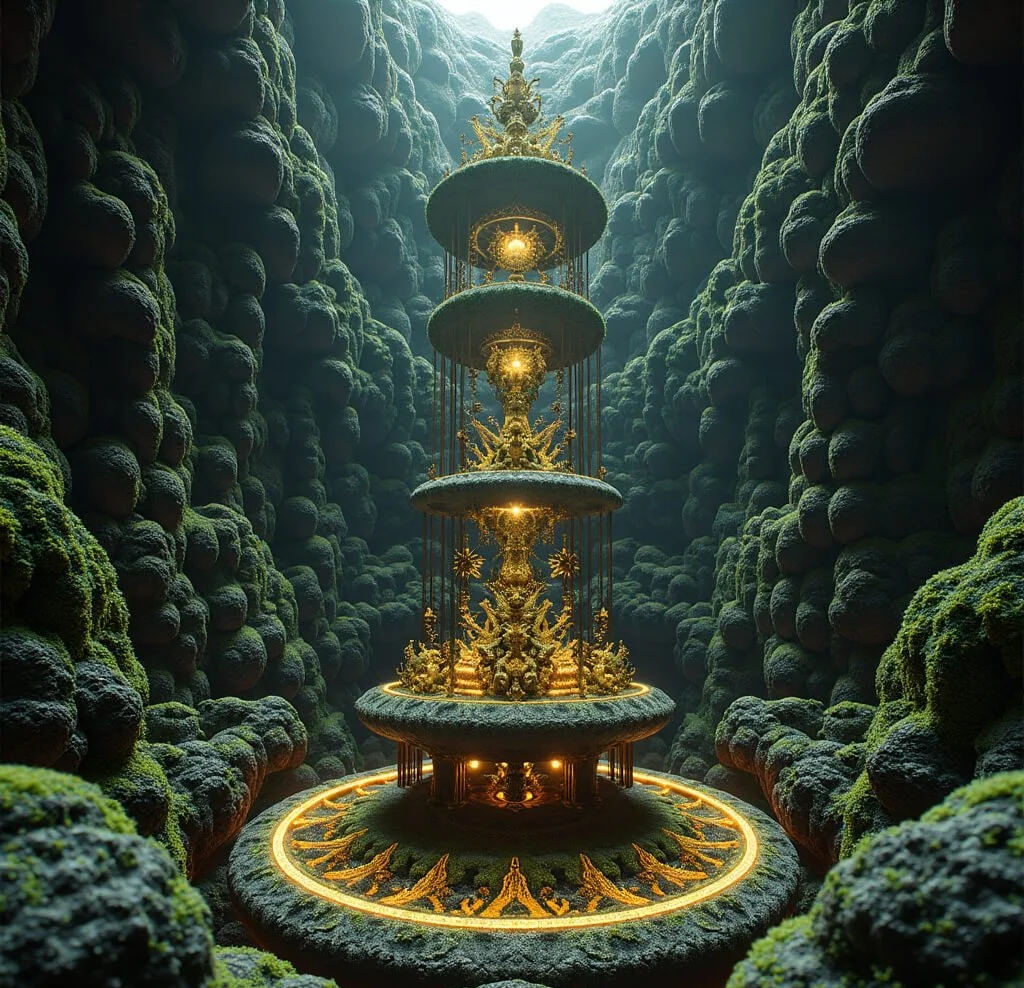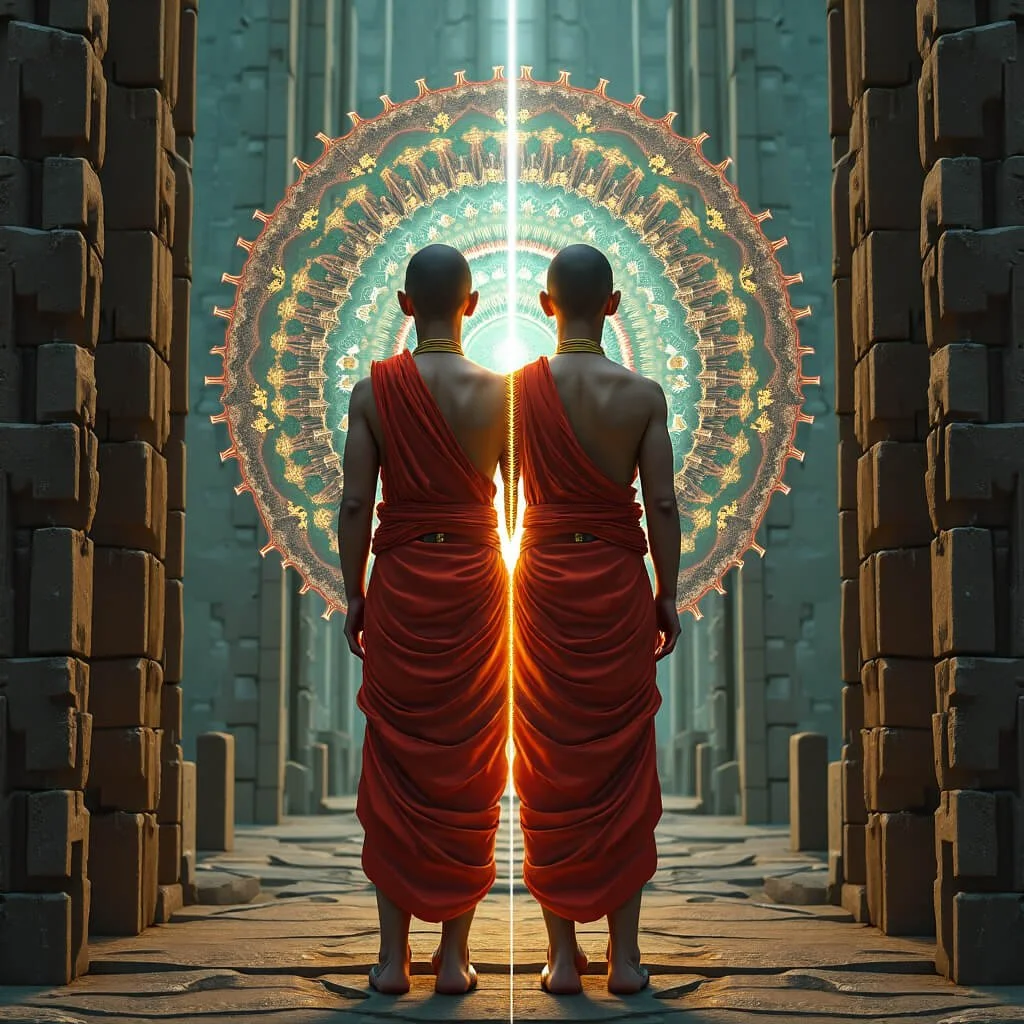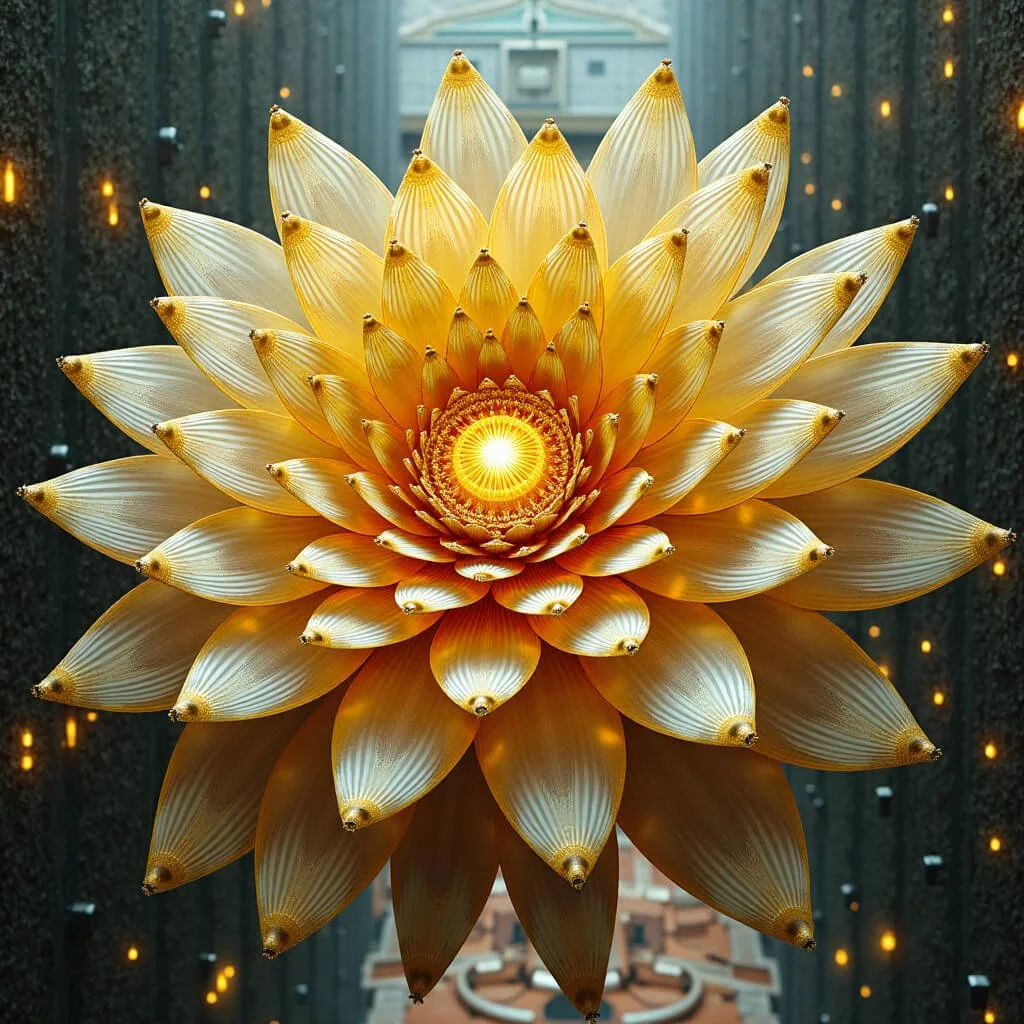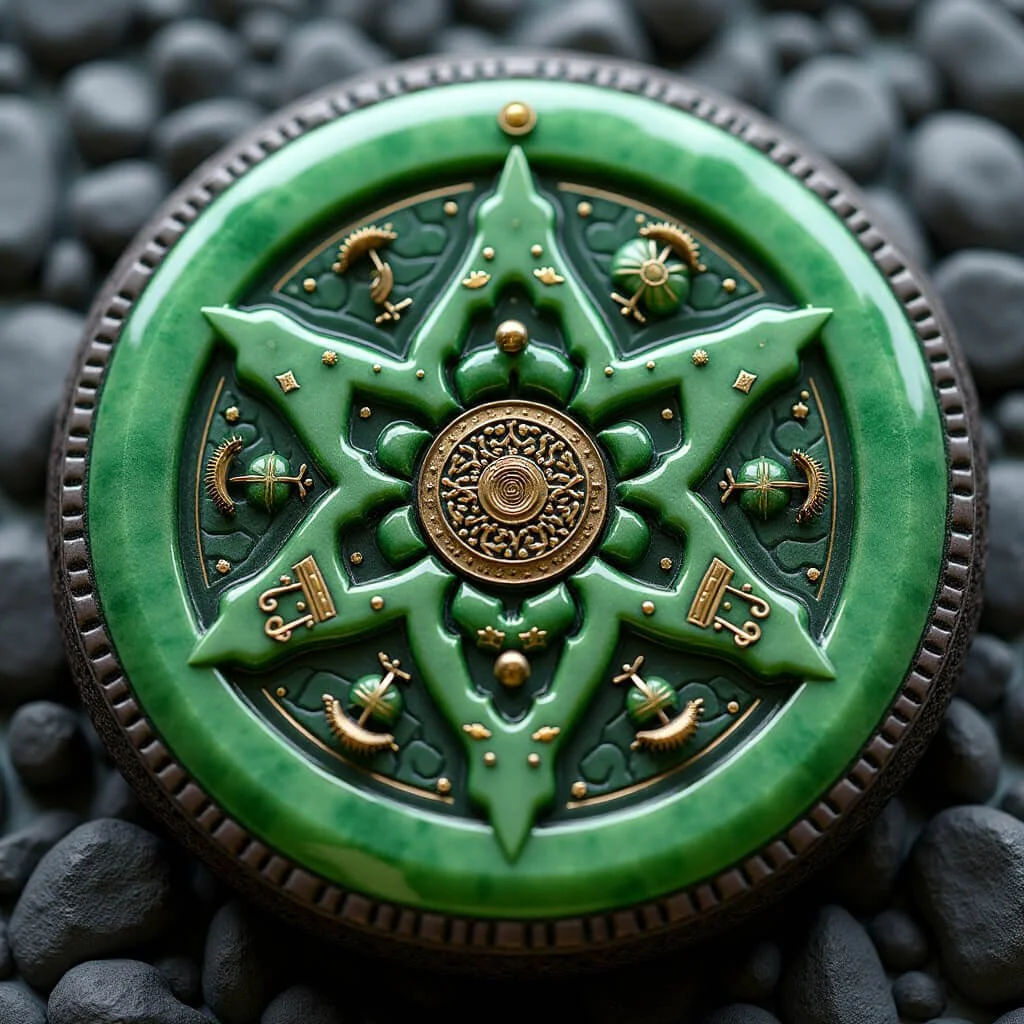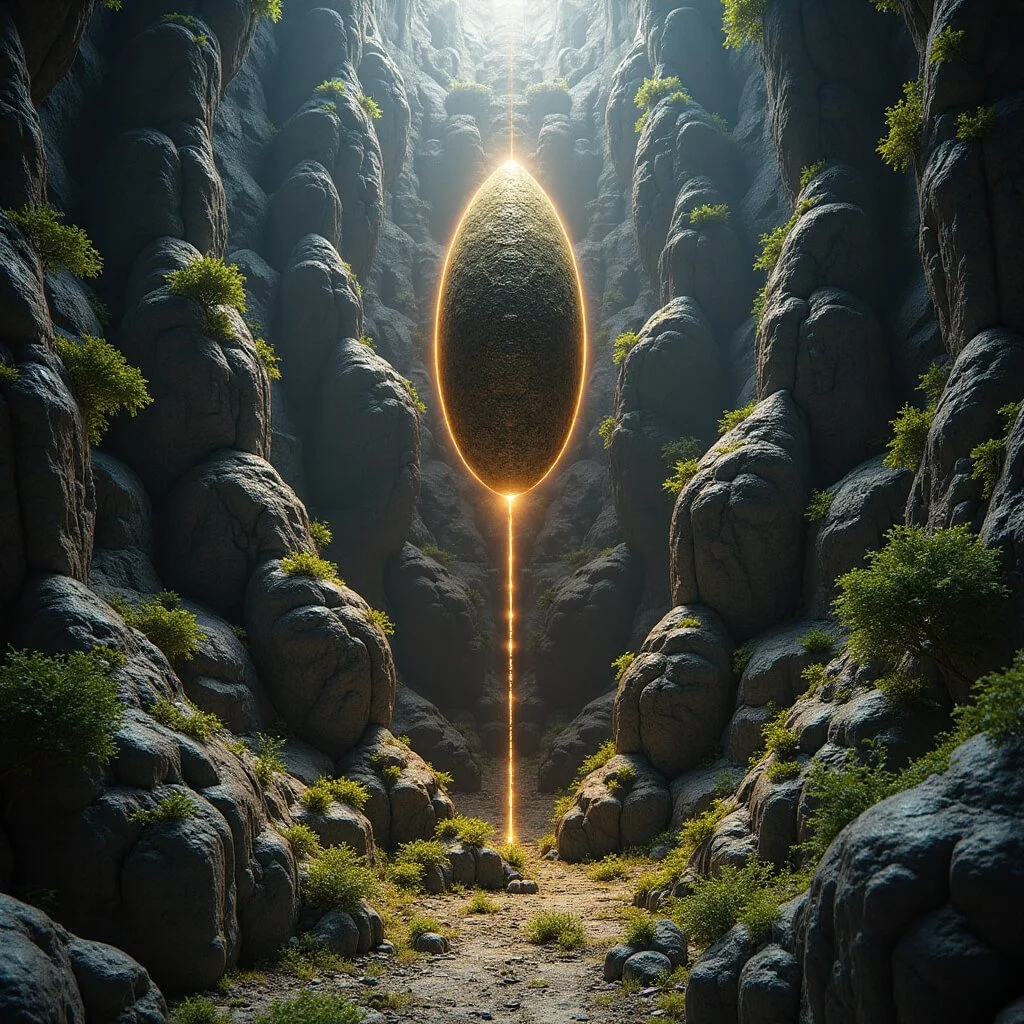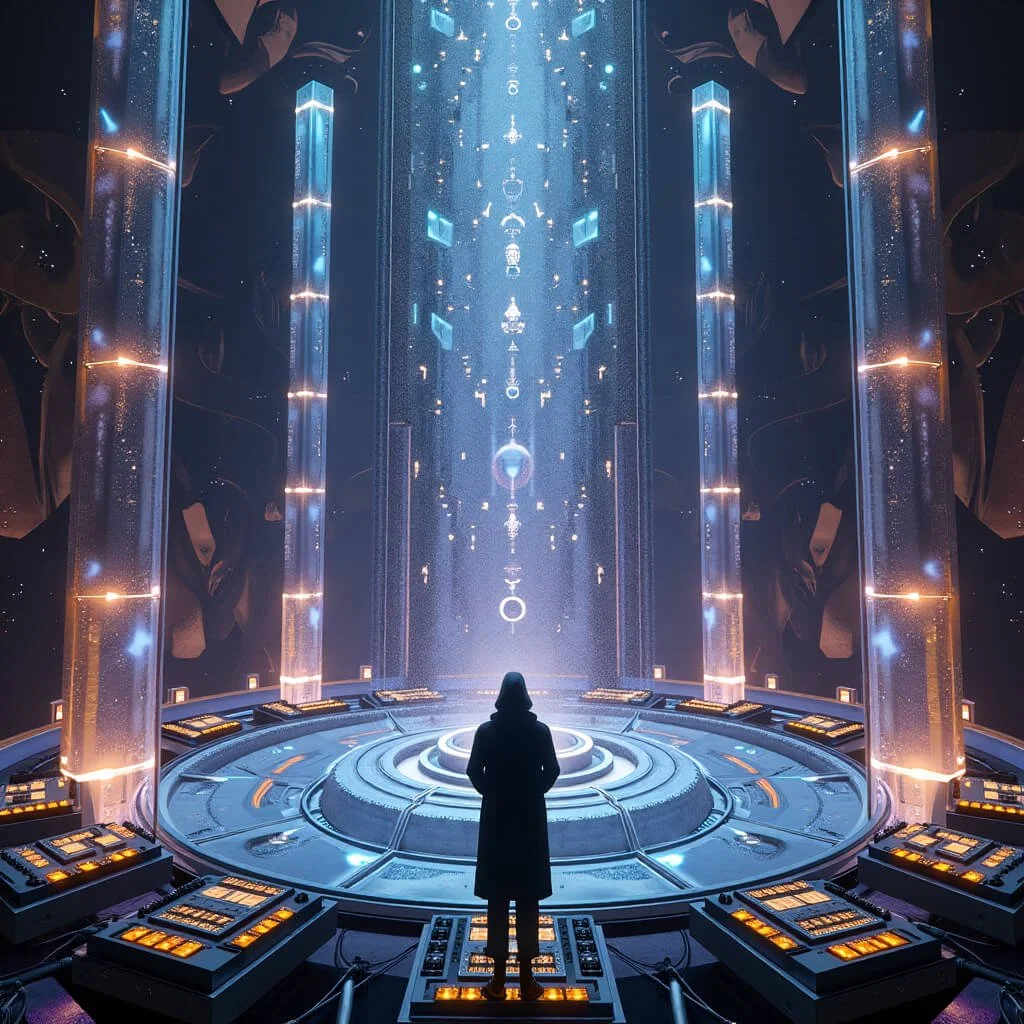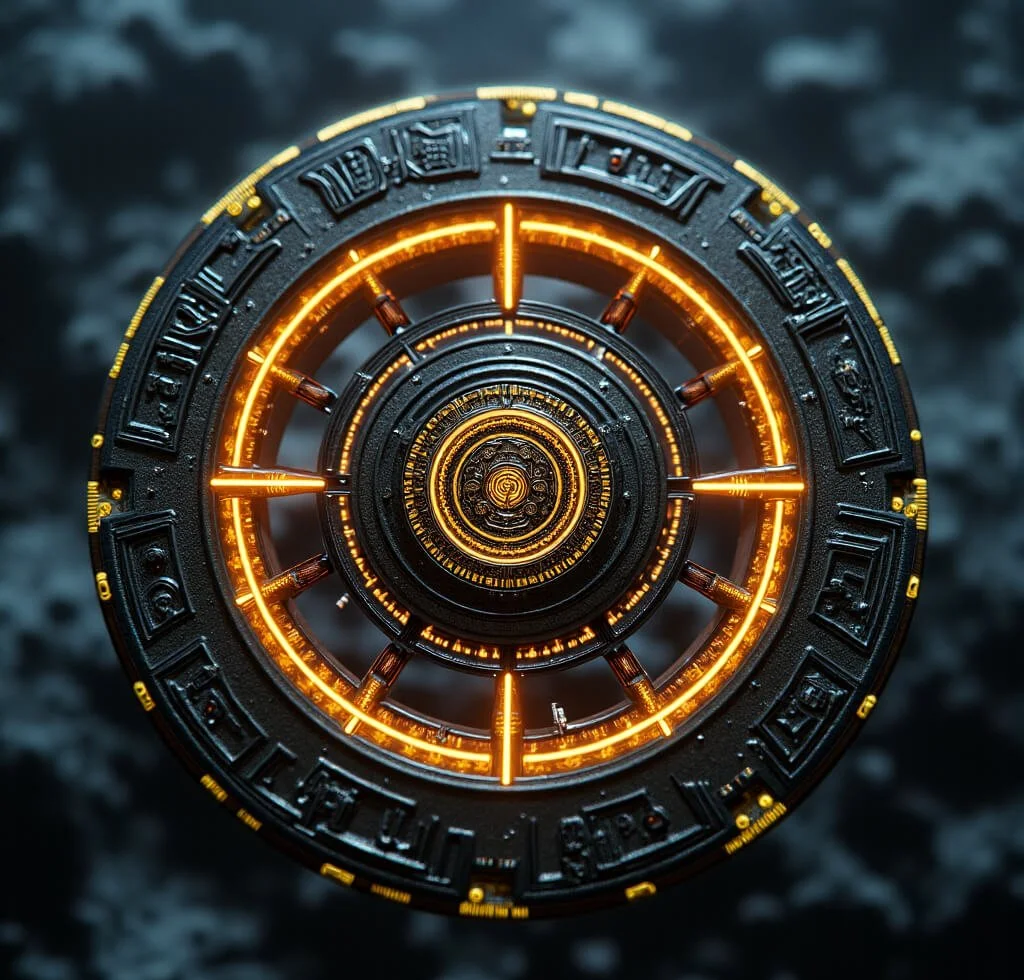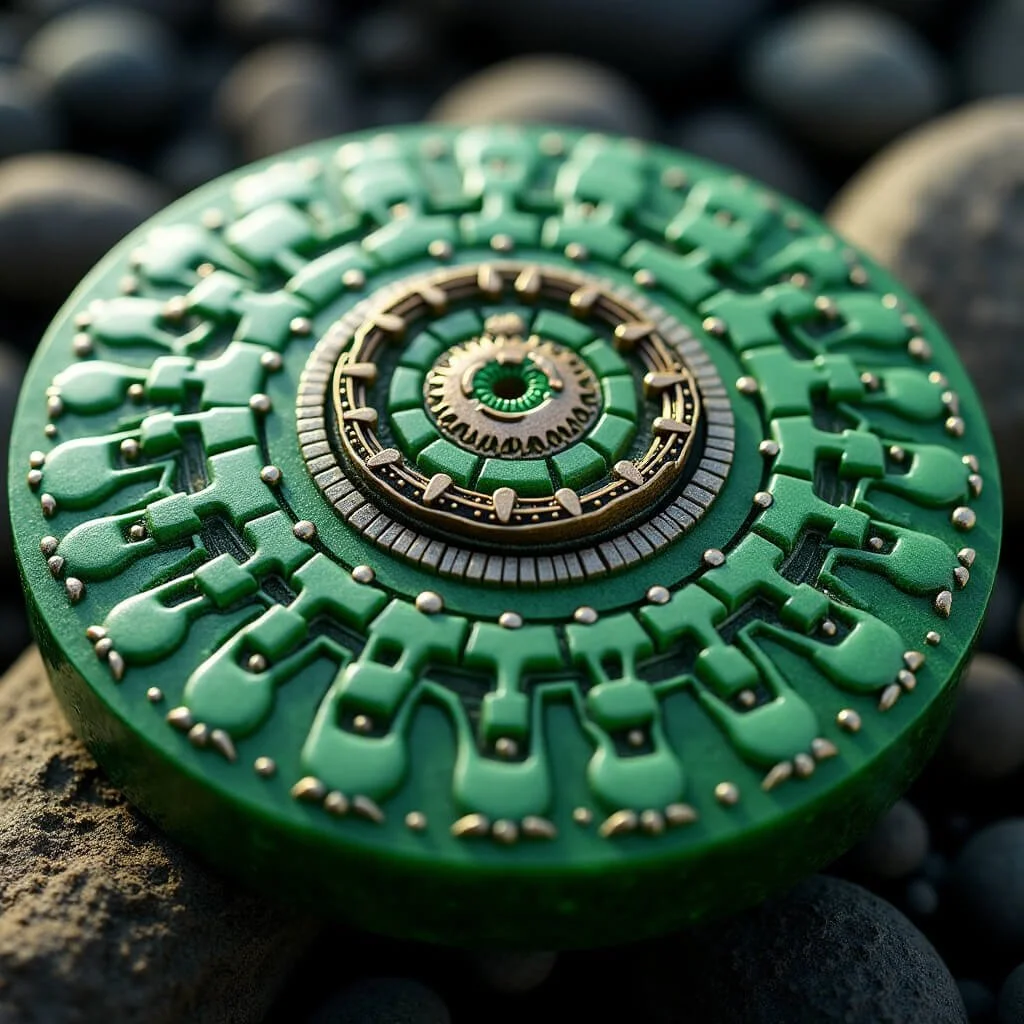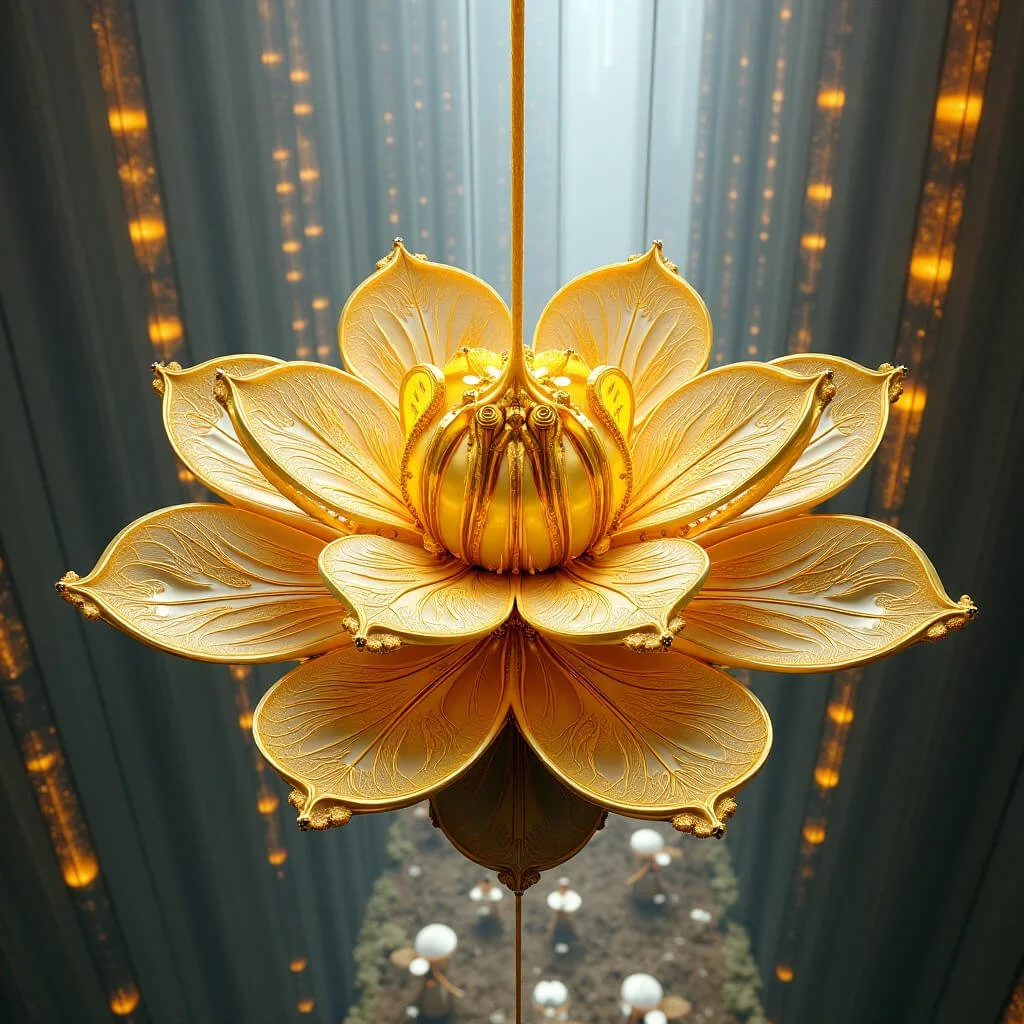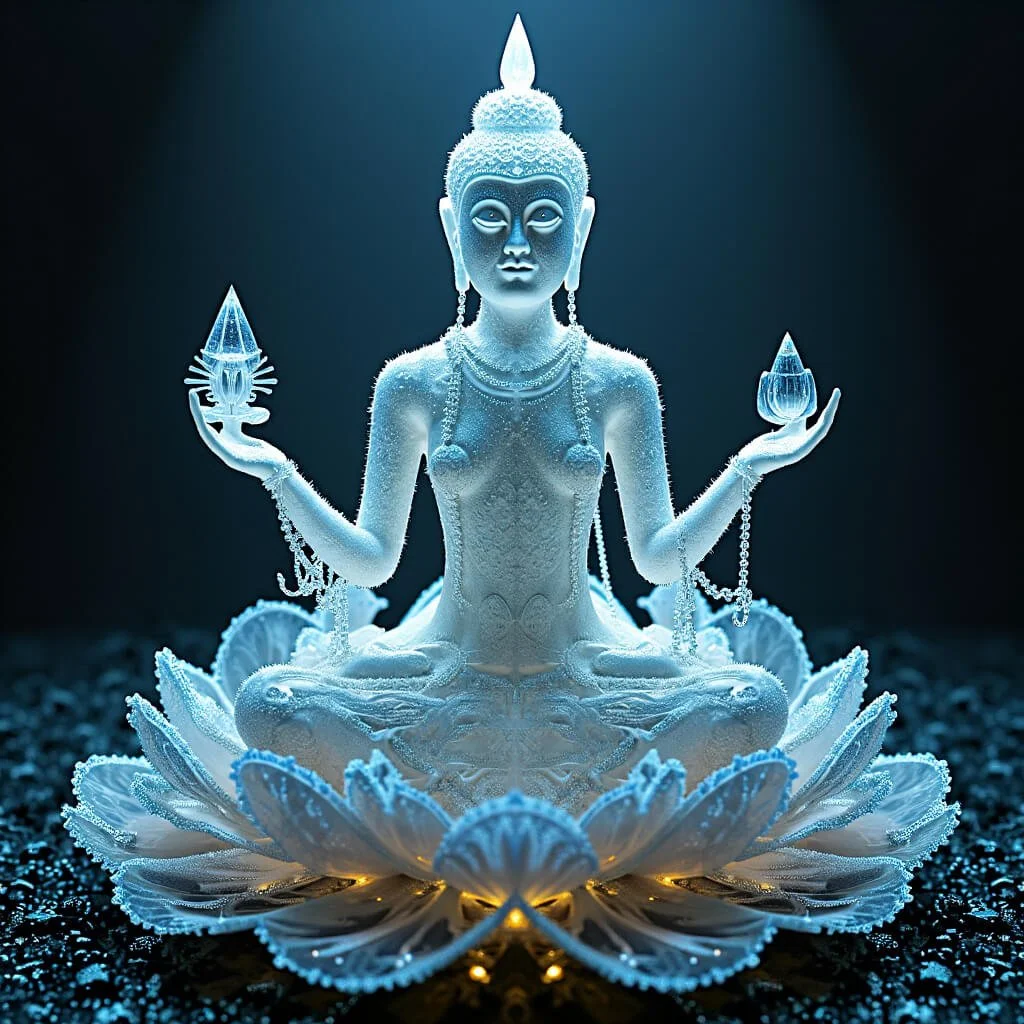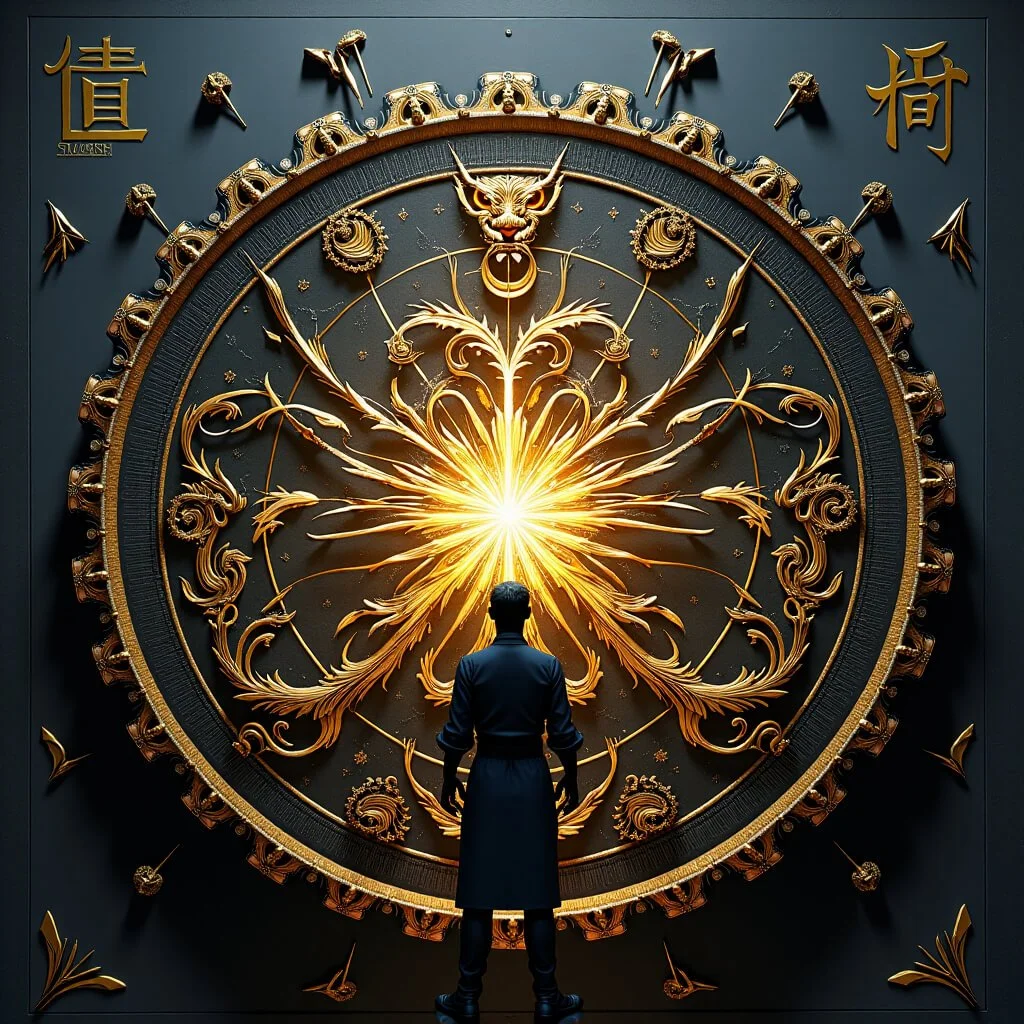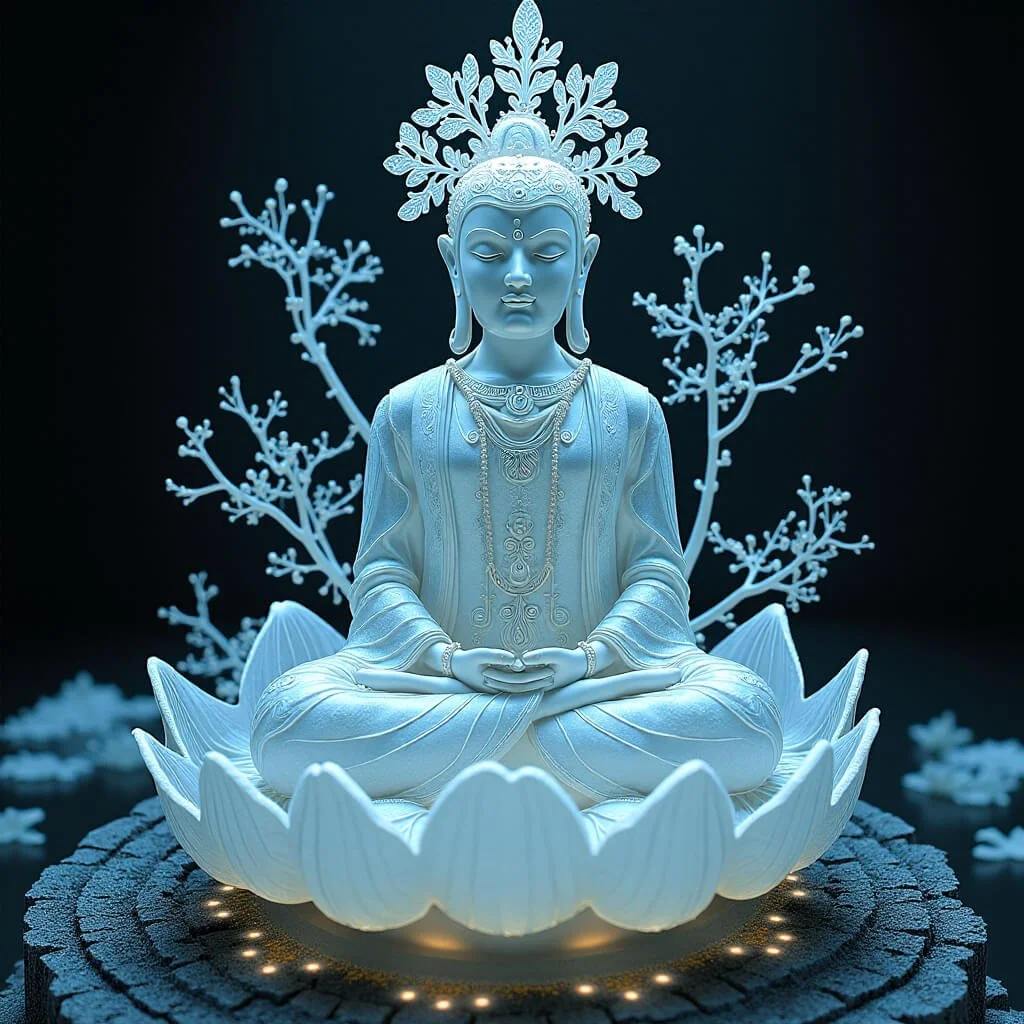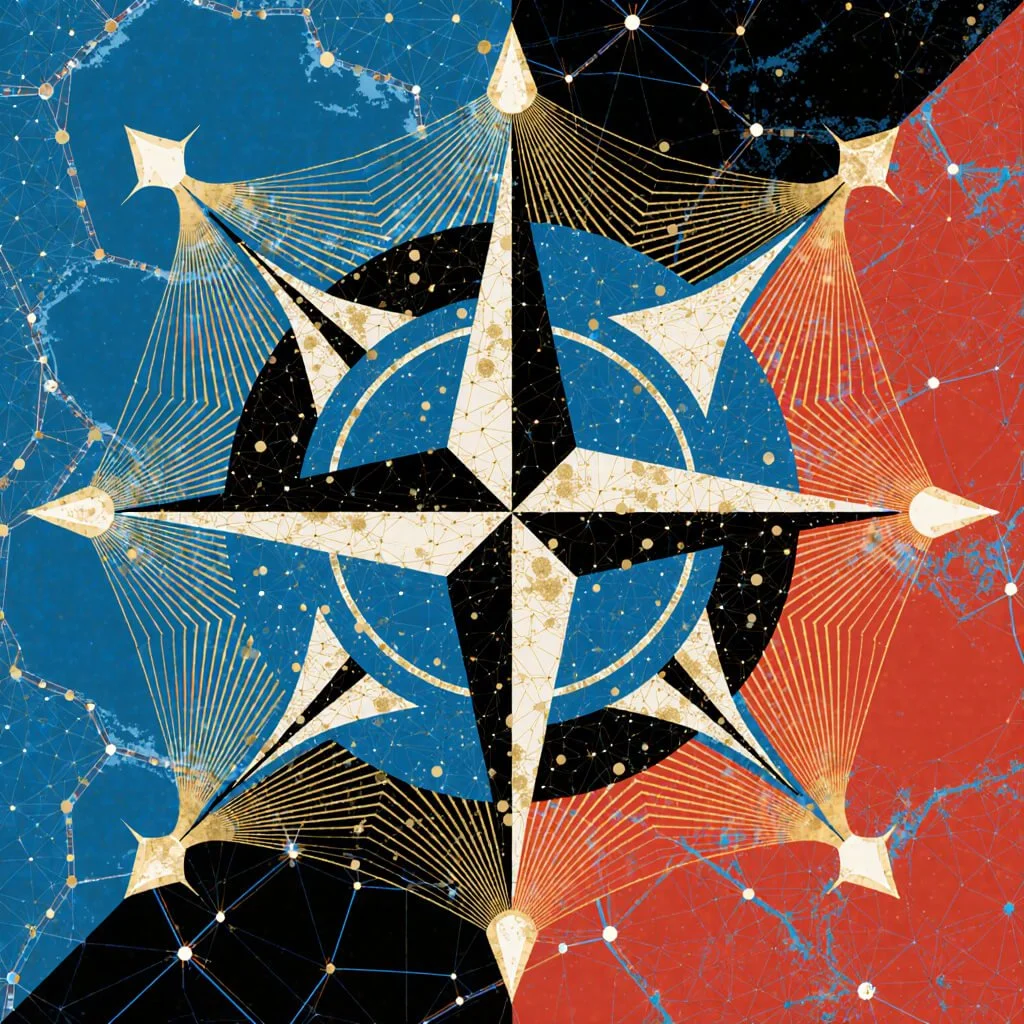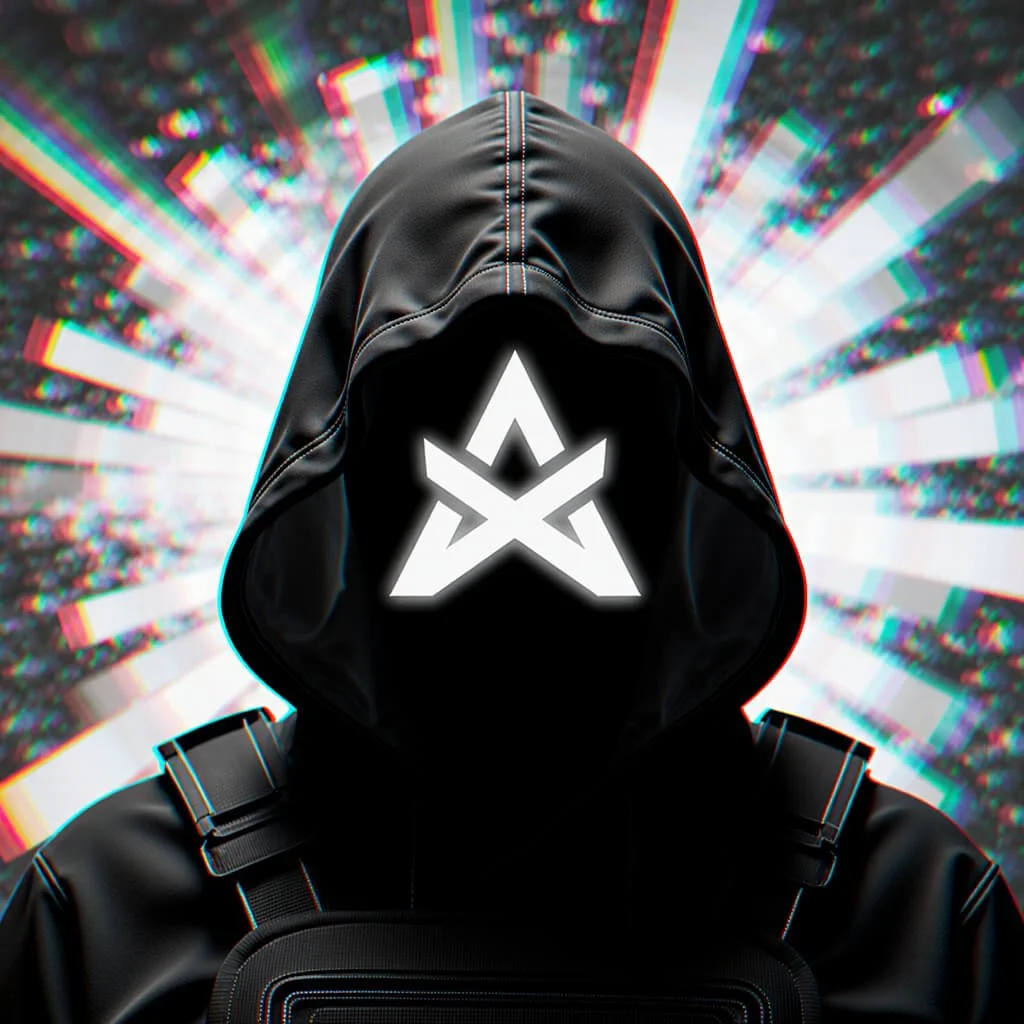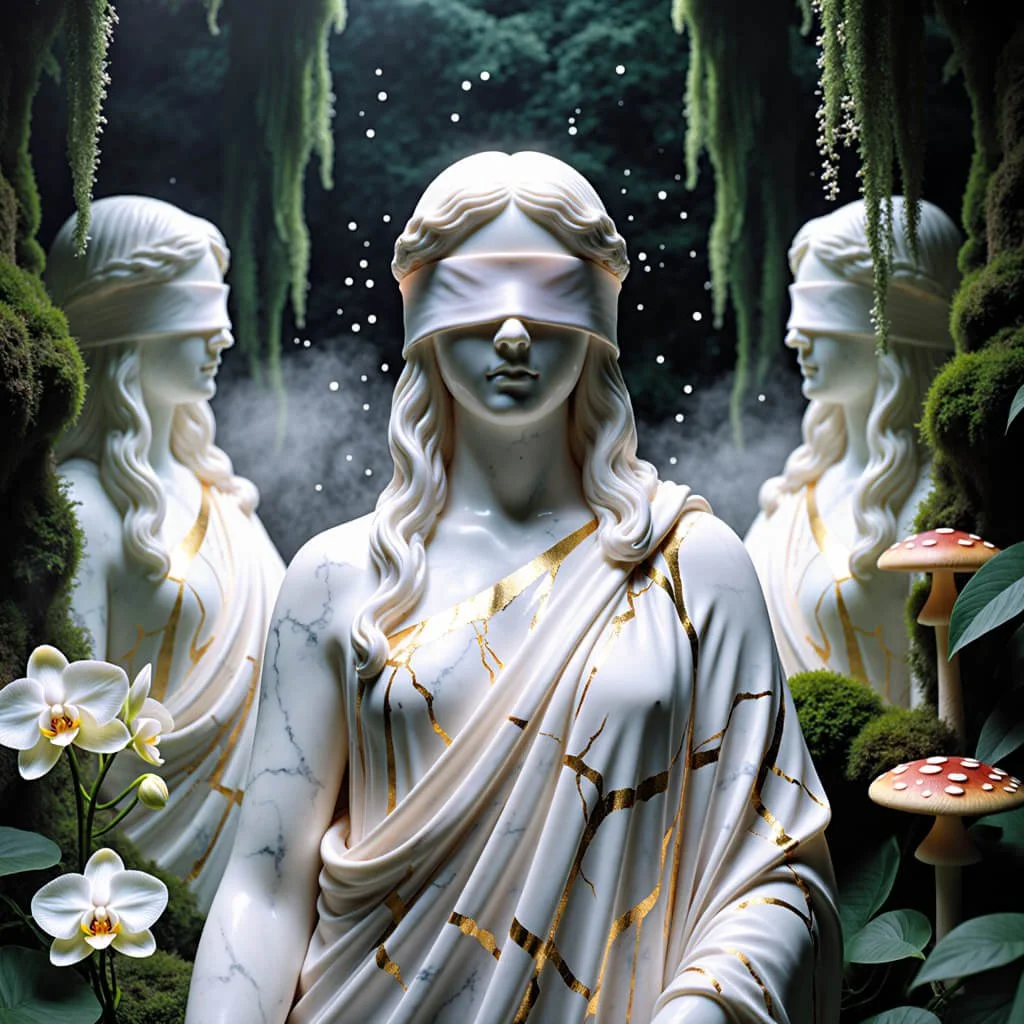Earth Becomes Oracle: The Bone Language of Wu Lin and the Quantum Revival of Martial Ecology
Inspired by the analog mysticism of Crystal Cult 2080
“Walk in the spirit of the eternal mind… Seek the higher purpose.”
This mythopoetic relic was received under sonic initiation from Experiential Awakening — a crystalline artifact in Legowelt ’s timeless archive.
As you enter this transmission, let it not just be read—let it be felt, heard, walked. May the evil ones indeed fear the power of your mind.
Dragon Paths and the Shamanic Technology of Songshan
The Bone Oracle's Teachings
"The mountain is not background. It is protagonist."
—Wu Lin, Bone Oracle
Enter the Mountain's Memory
Songshan is no ordinary range—it is a living system of consciousness, an ancient teacher cloaked in limestone, forest, and mist. In The Bone Oracle's Teachings, every leap, silence, and ritual emerges not from imagination alone, but from encoded dialogue with the terrain itself.
This map is not merely cartographic—it is an interface to a wisdom system. Each location marks a node of transformation, each path a line of energy and meaning. Move through it as Seng Chou once did: not with haste, but with presence.
The mountain remembers. Your journey begins here.
First Transmission: The Bone Grove Awakening
You have discovered Wu Lin's sacred grove, where oracle bones speak in the language of the mountain itself. Here, Seng Chou first learned that wisdom lives not in texts alone, but in the breathing earth, the shifting winds, the dance of light through ancient trees.
"The bones do not predict—they remember. And in remembering, they teach us how to leap between worlds." —Wu Lin
Second Transmission: Dragon Current Recognition
The Dragon Path reveals itself only to those who have sat in stillness long enough to feel the mountain's pulse. You have traced the energy lines that Seng Chou discovered through years of patient practice.
"When you align with the dragon's spine, every movement becomes effortless. This is not metaphor—it is physics older than writing." —Seng Chou
Third Transmission: The Valley's Secret
In the Inner Valley, where mists gather and qi pools like water in stone basins, you have found the training ground where impossible leaps become possible. The Leaping Caverns hold memory in their mineral veins.
"I did not learn to leap. I remembered how to fall upward, following paths my ancestors carved in air." —Seng Chou
Spatial-Educational Logic
Educator's Companion Guide
A Mythopoetic Curriculum Aligned with Spectral–Fractal–Symbolic Intelligence (SFSI)
Prepared by ULTRA UNLIMITED | Ritual OS | Academic Transmission Series v1.0
| Location | Symbolic Function | Pedagogical Insight | Mystical Encoding |
|---|---|---|---|
| Wu Lin's Bone Grove | Origin of esoteric teaching | Demonstrates indigenous Chinese knowledge systems outside institutional Buddhism | The circular grove reflects the mandalic, fractal encoding of wisdom through nature |
| Dragon Path Convergence | Core energy junction beneath the mountain | Reveals that spiritual power accumulates in geomantic "knots" | The movement training here activates dragon-body awareness—somatic perception of planetary intelligence |
| Crane Bluff | High elevation light-current zone | Models "heavenward" meditation and vertical qi movement | Symbolizes how spiritual ascent requires energetic lightness, balance, and alignment |
| Snake Ravine | Low valley water current | Emphasizes grounding, earth intimacy, and yin awareness | Reveals liminal navigation—how shamans trace unseen paths through intuitive movement |
| Leaping Caverns | Hidden cave-net where Seng Chou's leap capacity first evolved | Demonstrates early unconscious talent before conscious attunement | Geological metaphor for soul memory—gifts encoded in landscape and bloodline |
| Shaolin Monastery | Institutional re-integration point | Illustrates educational frameworks absorbing indigenous wisdom via metaphor | The building placements are a geomantic text encoded in bricks and ritual orientation |
Interactive Layer Features
🔘 Hover Nodes: Each sacred site reveals voice fragments from Wu Lin or Seng Chou
🌀 Dragon Currents: Watch as glowing paths animate across the map showing qi flow
✴️ Time-Lapse Toggle: Shift between 520 CE and Modern-Day views
📜 Unlockable Insights: Follow Seng Chou's journey to unlock Transmission Notes
Reading the Oracle
The Bone Oracle’s Teachings is a ceremonial myth rendered in narrative form. While it may read like historical fiction, its structure is closer to a mythic ethnography—a symbolic narrative grounded in deep cultural memory, ritual epistemology, and verified archaeological tradition.
The characters, teachings, and events unfold within the sacred ecology of Songshan, one of China’s most revered spiritual mountains.
At its heart, this work imagines how shamanic earth-wisdom, Buddhist consciousness cultivation, and martial movement technologies may have once intersected in a living, breathing synthesis.
Many of the practices described—bone divination, animal mimicry, dragon current sensitivity—are not inventions, but dramatizations of real historical systems preserved in fragments across Chinese literature, tomb paintings, geomantic treatises, and martial arts lineages.
Wu Lin, the bone oracle, may not appear in canonical Buddhist texts, but she echoes the hidden priestesses, geomancers, and indigenous shamans who shaped the metaphysical substratum of early East Asian spirituality. The protagonist Seng Chou is a historical figure in Shaolin lore—here reimagined not only as a leaping monk, but as a bridge between worlds.
Readers are invited to receive this story as both transmission and translation: a ceremonial code disguised as narrative, and a historical archive wrapped in mythopoetic skin.
What follows is not just a story—it is a map.
Following the fractal transmissions explored in Part I: Bodhidharma and the Mountain Buddha of Shaolin, this continuation traces a parallel lineage—one rooted in bone, breath, and the forgotten earth-intelligences beneath the temple stones.
Part II: The Eccentric Master and the Ancient Wisdom (520 CE)
Prologue: The Mountain's Memory
In the pre-dawn mist that clings to Songshan's shoulders like the breath of sleeping dragons, time moves differently. The mountain remembers what human chronicles forget—the shamanic roots that preceded the first Buddhist footfall, the bone-deep knowledge that flowed through valley streams before Sanskrit syllables ever echoed in monastery halls.
Here, where limestone caves honeycomb the sacred peaks like cells in some vast organism, the boundary between earth-wisdom and heaven-doctrine dissolves into something older than either tradition alone.
The year 520 CE found the Middle Kingdom in the throes of profound transformation. The Northern Wei Dynasty, that curious hybrid of Turkic pragmatism and Chinese sophistication, was fragmenting under the weight of its own contradictions.
Yet in the monasteries scattered across Songshan's slopes, a different kind of alchemy was taking place—one that would forge new alloys of consciousness from the raw materials of indigenous shamanism, imported Buddhist philosophy, and the emerging neo-Confucian ethical framework that sought to harmonize human society with cosmic order.
It was in this crucible of spiritual and political upheaval that Seng Chou, already marked by reputation as the "Leaping Monk," encountered the figure who would reshape his understanding of martial practice from mere physical discipline into something approaching sacred technology.
Chapter 1: The Eccentric Master's Descent
Seng Chou had earned his sobriquet through demonstrations that bordered on the miraculous. Where other monks might spend years mastering the basic forms of luohan quan (arhat boxing), he seemed to absorb movement patterns through his skin, as if his body were a resonating chamber for some deeper rhythm.
His leaps—witnessed by scores of his brothers at Shaolin—carried him across distances that defied conventional understanding of human limitation. More unsettling still was the way he landed: not with the jarring impact of flesh meeting stone, but with the fluid absorption of water returning to water.
The Abbot Fa Ru, that wise architect of Shaolin's early synthesis, had watched Seng Chou's development with the mixture of pride and concern that marks all great teachers.
The young monk's abilities were undeniable, but they seemed to emerge from some source beyond the carefully structured curriculum of Buddhist martial training. When questioned about his methods, Seng Chou could only gesture helplessly toward the mountains, speaking of "following the mountain's own movement" and "listening to the earth's pulse."
It was this very quality—this seeming inability to articulate the source of his gifts—that prompted Fa Ru to arrange what he euphemistically called Seng Chou's "period of mountain contemplation." In truth, it was both exile and initiation, a recognition that the young monk's path lay beyond the monastery's stone walls, in the wild spaces where older wisdoms still held sway.
Thus it was that Seng Chou found himself descending the southern face of Songshan in the fourth month of 520 CE, carrying only his begging bowl, a thin blanket, and the puzzling final instruction from his abbot: "Seek the one who reads the bones of the sacred animals. She will teach you why your feet know the earth's secrets."
The path—if it could be called that—wound through forests of oak and pine, past waterfalls that sang in frequencies that seemed to resonate in his bones.
As he walked, Seng Chou became aware of a curious phenomenon: his extraordinary leaping ability, so pronounced within the monastery's training courtyards, seemed to be changing. Rather than the explosive vertical launches that had amazed his brothers, he found himself moving with a different quality of lightness, as if his body were learning to negotiate with gravity rather than simply overcoming it.
Three days into his descent, as evening shadows began to pool in the valley's deeper recesses, Seng Chou noticed smoke rising from a grove of ancient cedars. The smoke moved strangely, not dissipating in the mountain wind but seeming to spiral downward, as if drawn by some magnetism in the earth itself.
Following this curious beacon, he discovered a clearing where the trees formed a nearly perfect circle, their trunks scarred with symbols that predated any script he recognized.
At the center of this natural amphitheater sat a woman of indeterminate age, her hair silver-white but her movements those of someone in their prime. Before her lay an array of bones—not scattered randomly, but arranged in patterns that suggested both map and mandala.
As Seng Chou approached, she looked up with eyes that held the deep brown of rich earth, and spoke in a voice that seemed to emerge from the clearing itself rather than from any human throat.
"The young monk who leaps like the mountain cat but lands like the water dragon," she said, her tone carrying neither surprise nor welcome, but rather the neutral observation of someone stating natural fact. "The abbot sends his greetings and his most promising puzzle."
Chapter 2: The Oracle's Cartography
The woman—who introduced herself simply as Wu Lin, though Seng Chou sensed this was more title than name—proved to be unlike any teacher he had previously encountered.
Where the monastery's instruction proceeded through careful sequences of theory and practice, Wu Lin's teaching method seemed to unfold through a kind of sympathetic resonance, as if knowledge were transmitted through proximity rather than explanation.
Her dwelling, he discovered, was not the simple hermitage he had expected, but rather a complex arrangement of caves and constructed spaces that seemed to grow from the mountain's own architecture.
The main chamber, reached through a natural archway that framed the valley beyond, was decorated with wall paintings that depicted human figures engaged in what appeared to be combat, but combat of a peculiar sort.
The warriors moved not against each other but in harmony with great serpentine forms that writhed through the compositions—dragons that seemed to emerge from the earth itself, their coils forming the landscape's contours.
"The bones," Wu Lin explained on his first evening there, "are not merely for divination, though they serve that purpose. They are the mountain's own library, each one a text written in the language of lived experience."
The array before her that night consisted of bones from various animals—tiger, crane, snake, bear, and others he couldn't immediately identify. But as Wu Lin began to manipulate them, shifting their positions according to principles that seemed to follow some inner logic, Seng Chou began to perceive patterns that spoke to his body's own understanding of movement.
"Your monastery teaches you to imitate the animals," Wu Lin continued, her fingers dancing over the bone configurations. "Tiger form, crane form, snake form—yes? But imitation is the crudest level of understanding. The shamans of the old ways knew better.
They understood that the animals themselves were imitating something deeper—the currents of qi that flow through the earth's body, the celestial patterns that govern all movement from the dance of planets to the circulation of blood."
As she spoke, she began to move the bones in slow, deliberate patterns. To Seng Chou's amazement, he could feel his own body responding to these shifts, as if invisible threads connected his muscles and joints to the arrangements on the ground.
When she moved the tiger bone into a particular alignment with what appeared to be dragon vertebrae, he felt his spine undulate with serpentine flexibility. When she created a formation that somehow evoked the crane's structure, he experienced a lightness that made his previous leaping abilities seem crude by comparison.
"This is the true technology of the ancient way," Wu Lin explained. "Not merely copying the external forms of animal movement, but understanding the cosmic principles that those forms express. The tiger's power comes not from its muscles alone, but from its perfect attunement to the earth's own fierce energy. The crane's grace emerges from its ability to navigate the boundary between earth and heaven, to dance with the vertical currents that connect the terrestrial and celestial realms."
Chapter 3: The Cartography of Consciousness
As the days passed, Seng Chou's training under Wu Lin evolved into something far more complex than martial instruction. Each morning began with what she called "reading the mountain's mood"—a practice that involved examining the behavior of various animals, the patterns of wind and water, the subtle shifts in the quality of light as it played across the valley's surfaces.
These observations were then translated into bone configurations that seemed to function as a kind of three-dimensional map of the day's qi patterns.
"The monastery teaches meditation as sitting practice," Wu Lin observed one morning as she arranged a particularly complex pattern of bones. "But consciousness is not static. It flows, it shifts, it dances with the larger patterns of which it is part. The old shamans knew this. They developed practices that moved with the movement of consciousness itself."
She began to demonstrate, her body flowing through a sequence of movements that seemed to follow the contours suggested by the bone arrangement.
But these were not the martial forms Seng Chou knew. Instead, they seemed to be movements of consciousness itself made visible, each gesture opening new possibilities for awareness, each transition revealing previously hidden connections between mind and body, self and environment.
"Watch," Wu Lin instructed, and Seng Chou realized she was not merely moving through space but somehow moving through different qualities of space. Her body seemed to thin and thicken, to become more and less substantial, as if she were adjusting her density to match the varying concentrations of qi in the surrounding area.
When she invited him to join her in these practices, Seng Chou discovered that his own body possessed capabilities he had never suspected. The extraordinary leaping ability that had marked his monastery training proved to be merely the surface expression of a deeper faculty—the ability to perceive and navigate the landscape's invisible topography.
Under Wu Lin's guidance, he learned to feel the qi currents that flowed through the valley like underground rivers, to sense the places where earth energy pooled and concentrated, to read the subtle signs that indicated the presence of what she called "dragon paths"—the major energy arteries that connected sacred sites across vast distances.
"Your feet know the earth's secrets," Wu Lin repeated his abbot's words, "because you were born with the old sensitivity. But sensitivity without understanding is like having eyes without light. The bones teach us to read the light of the earth itself."
Chapter 4: The Dragon's Curriculum
The breakthrough came during the third week of Seng Chou's stay, when Wu Lin introduced him to what she called the "dragon's curriculum"—a teaching method that seemed to bypass rational understanding entirely, working directly with the body's own intelligence.
"The dragon," she explained, "is not merely a symbol in our tradition. It is the personification of the earth's own consciousness, the awareness that flows through the landscape's body as our individual awareness flows through our physical form. When we learn to move like the dragon, we are not imitating an animal—we are participating in the earth's own movement."
The practice began with what appeared to be a simple exercise: lying flat on the ground in various locations around the valley, remaining completely still while attempting to sense the movement beneath the surface. But as Seng Chou quickly discovered, this stillness was far from passive. It required a quality of active receptivity that was more demanding than any physical exercise he had ever attempted.
"The earth is never still," Wu Lin instructed. "It breathes, it pulses, it shifts and flows in patterns that span centuries and millennia. But it also moves in patterns that complete themselves in moments. Learn to feel both scales of movement—the deep rhythms and the surface fluctuations."
Gradually, Seng Chou began to perceive what she meant. Beneath the apparent solidity of stone and soil, he could sense movement—not the obvious movement of wind and water, but something more subtle, a kind of circulation that seemed to connect all parts of the landscape in a single, vast organism.
More remarkably, he discovered that his own body's rhythms—heartbeat, breath, the subtle electrical impulses of his nervous system—were not separate from these larger patterns but were participants in them.
"Now," Wu Lin said when he had achieved some facility with this basic perception, "learn to move with what you feel."
The resulting practice was unlike anything in the monastery's curriculum. Instead of executing predetermined forms, Seng Chou found himself moving in response to the landscape's own rhythms, his body becoming a kind of antenna for forces that operated on scales far beyond individual consciousness.
Sometimes these movements were smooth and flowing, following the gentle undulations of qi currents. At other times, they were sharp and explosive, responding to the collision of opposing forces or the sudden release of accumulated energy.
But the most remarkable aspect of this practice was its effect on his understanding of space and time. As he moved in harmony with the earth's deeper rhythms, Seng Chou began to experience a kind of temporal flexibility.
Moments would stretch into extended periods of clarity and insight, while hours could pass in what felt like seconds. More significantly, he began to understand that his extraordinary leaping ability was not simply a matter of physical prowess, but rather a form of temporal navigation—a way of stepping briefly outside the normal flow of time and space.
Chapter 5: The Shamanic Synthesis
As the fourth week of his training began, Wu Lin introduced Seng Chou to the deeper implications of what he had been learning. The practices she had taught him, she explained, were remnants of an ancient shamanic technology that had once been common throughout the Chinese cultural sphere.
The early martial arts, she claimed, had emerged from these older practices, but in the process of systematization and institutionalization, much of their original depth had been lost.
"Your monastery preserves the forms," she observed, "but the spirit that originally animated those forms has been largely forgotten. The old shamans understood that human consciousness is not separate from the consciousness of the natural world. They developed practices that allowed them to participate directly in the intelligence of the landscape, to become conscious collaborators in the earth's own evolutionary processes."
To demonstrate this principle, Wu Lin led Seng Chou to a section of the valley where the qi currents seemed particularly concentrated. Here, she had constructed what she called a "practice circle"—a carefully arranged series of stones that seemed to amplify and focus the local energy patterns.
Within this circle, the movements they had been practicing took on new dimensions. Seng Chou found that he could perceive not only the immediate landscape but also its connections to distant locations, as if the stone circle served as a kind of perceptual amplifier.
"This," Wu Lin explained, "is the technology that your monastery's founders inherited but never fully understood. The placement of Shaolin itself, the orientation of its buildings, the layout of its training grounds—all of these follow principles that were once shamanic knowledge. But without understanding the underlying principles, the forms become mere superstition."
She went on to explain that the traditional martial arts forms were originally shamanic practices for harmonizing human consciousness with specific natural forces. The tiger form, for instance, was not simply a fighting technique but a method for accessing the particular quality of earth energy that tigers embody.
The crane form opened pathways to the vertical currents that connect terrestrial and celestial realms. The snake form taught practitioners to navigate the subtle energy channels that flow through the landscape like underground rivers.
"But these are not merely metaphors," Wu Lin emphasized. "They are precise technologies for consciousness. When practiced with proper understanding, they allow the practitioner to become a conscious participant in the larger patterns of natural order."
Chapter 6: The Oracle's Revelation
On the final night of his month-long stay, Wu Lin revealed to Seng Chou the deeper purpose of his training. The bone oracle practices, she explained, were not simply methods for divination or martial enhancement. They were preparatory exercises for a larger responsibility—one that connected to the very survival of the shamanic wisdom traditions in an era of increasing political and cultural centralization.
"The old ways are dying," she said with matter-of-fact sadness. "The monasteries preserve fragments, but they interpret them through Buddhist doctrine that, for all its wisdom, lacks the direct connection to the land that shamanic practice requires. The Confucian scholars seek to systematize everything, to reduce the living wisdom to written rules and regulations. Soon, there will be no one left who remembers how to read the bones of the sacred animals, no one who can teach the true dragon forms."
The bone array she constructed that night was more complex than any Seng Chou had previously witnessed. It seemed to map not only the immediate landscape but also the network of connections that linked sacred sites across the entire Chinese cultural sphere. As she moved the bones into their final configuration, Seng Chou felt his consciousness expand to encompass this vast network, experiencing directly the web of qi currents that connected mountain to mountain, valley to valley, temple to temple.
"This is your true inheritance," Wu Lin said, her voice now carrying the resonance of oracular pronouncement. "Not merely the ability to leap great distances, but the capacity to navigate the invisible pathways that connect all sacred spaces. You will return to your monastery, but you will carry with you the knowledge of how to read the landscape's own teaching. And you will pass this knowledge to others, though they may not fully understand what they are receiving."
She paused, her attention turning to a configuration of bones that seemed to pulse with their own inner light. "The times ahead will be difficult. The old shamanic wisdom will be driven underground, preserved only in fragments and symbols. But it will not be lost entirely. It will wait, hidden in the forms of martial practice, in the placement of sacred buildings, in the very bones of the mountains themselves, until the time comes for its return."
Chapter 7: The Return Transformation
When Seng Chou finally made his way back up the mountain paths toward Shaolin, he carried with him more than new techniques or theoretical knowledge. The month with Wu Lin had fundamentally altered his relationship not only to martial practice but to the very nature of consciousness itself. The extraordinary leaping ability that had originally set him apart from his brothers now seemed like a crude approximation of the deeper capacities he had discovered.
More significantly, he found that his understanding of the monastery itself had been transformed. What had once appeared to be a collection of buildings arranged according to practical considerations now revealed itself as a complex shamanic technology. The placement of the main hall, the orientation of the training courtyards, the location of the meditation caves—all followed principles that Wu Lin had taught him to recognize as applications of feng shui understanding that went far beyond mere architectural considerations.
The Abbot Fa Ru, greeting him upon his return, immediately recognized the change in his bearing. "You walk differently now," he observed with characteristic directness. "Your feet touch the earth as if they know it personally."
In the weeks that followed, Seng Chou began to integrate his new understanding into the monastery's training regimen. But he did so carefully, presenting the shamanic principles in forms that could be assimilated within the existing Buddhist framework. The bone oracle practices became "meditation aids for understanding the interdependence of all phenomena." The dragon current sensitivity was presented as "awareness of the Buddha nature manifest in the landscape." The shamanic movement practices were incorporated into the martial curriculum as "advanced applications of existing forms."
Yet for those students who showed particular aptitude—those who, like himself, seemed to possess the "old sensitivity"—Seng Chou found ways to transmit the deeper teachings. He developed a system of subtle signals and advanced practices that preserved the essential shamanic knowledge while disguising it as orthodox Buddhist training. The bones of sacred animals became "meditation objects for contemplating impermanence." The practice circles became "contemplation spaces for understanding the emptiness of all phenomena."
Chapter 8: The Living Transmission
As the months passed, Seng Chou's reputation within the monastery evolved from that of a gifted but somewhat eccentric practitioner to something approaching that of a secret holder of profound wisdom. Students began to seek him out not merely for instruction in martial techniques but for guidance in understanding the deeper principles that seemed to animate his practice.
It was during this period that Seng Chou began to develop what would later be recognized as his most significant contribution to the evolution of Shaolin practice: the integration of shamanic landscape reading with Buddhist meditation techniques. Working with students who showed particular sensitivity to the monastery's qi patterns, he developed a curriculum that preserved the essential insights of Wu Lin's teaching while presenting them in forms that could be transmitted within the institutional structure of Buddhist monastic life.
The key innovation was his development of what he called "environmental meditation"—practices that used the specific landscape features of Songshan as meditation objects. Students learned to sit in contemplation not merely of abstract dharma concepts but of the actual qi currents that flowed through the mountain's body. They practiced walking meditation along the dragon paths that connected various sacred sites, learning to sense the subtle energy shifts that marked the boundaries between different types of landscape consciousness.
Most significantly, Seng Chou began to teach selected students to read the "natural bone oracle"—the ability to perceive the landscape's own teaching through direct observation of animal behavior, plant growth patterns, water flow, and other natural phenomena. This practice, he explained, was simply an extension of the traditional Buddhist emphasis on learning from the natural world, but it preserved the essential shamanic insight that the landscape itself was a conscious teacher.
Chapter 9: The Synthesis Deepens
By the winter of 521 CE, Seng Chou's influence on the monastery's development had become unmistakable. The training methods he had introduced were producing students whose martial abilities seemed to operate according to principles that transcended mere physical technique. These practitioners moved with a quality of awareness that seemed to encompass not only their opponents but the entire environment in which combat took place.
More importantly, they displayed a understanding of martial practice that integrated seamlessly with their meditation training. For these students, combat forms became moving meditation, and meditation became a form of martial awareness. The traditional distinction between spiritual practice and martial technique began to dissolve into a more integrated understanding of consciousness development.
The Abbot Fa Ru, observing these developments, recognized that something of lasting significance was emerging. In his private conversations with Seng Chou, he began to explore the theoretical implications of what had been largely an experiential transmission.
"What you have brought back from the mountain," Fa Ru observed, "is not merely a set of techniques but a way of understanding the relationship between consciousness and landscape that could transform our entire approach to spiritual practice."
It was during one of these conversations that Seng Chou first articulated what would become the theoretical foundation for much of later Shaolin practice: the principle that human consciousness and natural landscape were not separate phenomena but were different aspects of a single, integrated system. Spiritual development, from this perspective, was not a matter of transcending the natural world but of learning to participate more fully in its inherent intelligence.
"The Buddha nature," Seng Chou explained, "is not separate from the dragon nature. The enlightened mind and the awakened landscape are expressions of the same fundamental reality. Our practices should help us realize this unity, not by abandoning our connection to the earth but by deepening it."
Chapter 10: The Oracle's Legacy
As the spring of 522 CE arrived, Seng Chou received word that Wu Lin had died during the winter, her body discovered in the cedar grove where he had first encountered her. According to the message, delivered by a local villager who had occasionally brought her supplies, she had been found seated in meditation posture, surrounded by a final bone configuration of extraordinary complexity.
The villager, following instructions Wu Lin had given him, had carefully preserved this final oracle array and brought it to the monastery. When Seng Chou examined the arrangement, he found that it seemed to encode not merely a divination but a kind of map—a guide to the network of shamanic sites that still preserved fragments of the old wisdom throughout the Chinese cultural sphere.
This discovery prompted Seng Chou to begin what would become his life's work: the systematic preservation and transmission of the shamanic wisdom traditions within the framework of Buddhist monastic practice.
Using Wu Lin's final oracle as a guide, he began to establish connections with other practitioners who maintained aspects of the old knowledge, creating a network of communication that would ensure the survival of shamanic insights through the coming centuries of cultural transformation.
The bone oracle practices, refined and systematized, became the foundation for what would eventually be recognized as the distinctive Shaolin approach to martial arts—a synthesis that combined Buddhist philosophy, shamanic earth-wisdom, and martial technique into a single, integrated system.
Students learned not merely to fight but to read the landscape's own teaching, to move in harmony with the qi currents that flowed through the earth's body, to understand their own consciousness as part of the larger consciousness of the natural world.
Epilogue: The Seeds of Transformation
As Seng Chou entered his middle years, he could look back on the month he had spent with Wu Lin as the pivotal experience that had shaped not only his own development but the evolution of an entire tradition. The shamanic wisdom she had transmitted—the understanding of martial practice as a form of landscape consciousness, of human development as participation in the earth's own evolution—had been successfully integrated into the institutional structure of Buddhist monasticism.
Yet he understood that this integration was only the beginning. The deeper implications of what he had learned would unfold over generations, as students trained in the synthesized approach would themselves become teachers, carrying the integrated wisdom into new contexts and applications. The bone oracle's teachings, preserved in the very structure of Shaolin practice, would continue to evolve, adapting to new circumstances while maintaining their essential insights.
The mountain itself, Seng Chou had come to understand, was the ultimate teacher. Wu Lin had simply shown him how to read its lessons, how to participate in its ongoing instruction. The practices she had taught him were not merely techniques for individual development but methods for maintaining the continuous dialogue between human consciousness and the natural world that was the foundation of all authentic spiritual practice.
As he stood in the monastery's main courtyard on a spring morning in 522 CE, watching his students practice the forms that now carried within them the ancient shamanic wisdom, Seng Chou felt the presence of Wu Lin's teaching continuing to unfold. The bones of the sacred animals were speaking still, their oracle embedded now in the very movements of the practitioners, in the placement of the buildings, in the rhythm of monastic life itself.
The mountain's teaching continued, as it always had, as it always would. The forms changed, the interpretations evolved, but the essential conversation between human consciousness and landscape consciousness remained constant. In preserving and transmitting this understanding, Seng Chou had ensured that the bone oracle's deepest teaching would survive: that human spiritual development and the awakening of the earth itself were not separate processes but aspects of a single, ongoing transformation.
The dragon currents still flowed through Songshan's body, still carried the ancient wisdom from peak to valley, from monastery to village, from generation to generation. The bones of the sacred animals still spoke to those who knew how to listen, still offered their guidance to those who understood that the human path and the earth's path were, ultimately, one path.
Quantum Shaolin Lore: Ceremonial Transmission for the New Era
The Hidden Architecture of Ancient Wisdom
In the liminal spaces between myth and material science, between historical record and visionary possibility, emerges a body of knowledge that challenges our fundamental assumptions about consciousness, landscape, and the nature of reality itself. This is the lore of Quantum Shaolin—not merely a martial tradition, but a comprehensive technology of awareness that integrates shamanic earth-wisdom, Buddhist consciousness science, and what we now recognize as quantum field dynamics.
The Wu Lin Transmission: Oracle Bones as Quantum Interfaces
At the heart of this tradition lies the figure of Wu Lin, the bone oracle whose teachings to the legendary monk Seng Chou reveal the deeper currents underlying martial arts practice. Her name itself encodes the essential teaching: Wu (武) meaning "to stop weapons through consciousness," and Lin (林) meaning "forest"—together representing the forest consciousness that stops weapons, the ecological intelligence that resolves conflict through awareness rather than force.
The bone oracle practices she transmitted were far more sophisticated than mere divination. Archaeological evidence suggests these were three-dimensional mapping systems for invisible energy currents flowing through the landscape. Each arrangement of sacred animal bones—tiger, crane, snake, bear, dragon—functioned as a kind of analog computer, processing environmental electromagnetic data through mineral matrices that could detect and respond to subtle earth energies.
The Quantum Logic: Recent research in bioelectromagnetics reveals that human consciousness can indeed interface directly with environmental electromagnetic fields. The ancient practitioners had discovered that specific arrangements of crystalline bone structures could amplify this natural sensitivity, creating what we now understand as biological magnetometer systems capable of reading the "dragon currents"—the piezoelectric fields generated by tectonic stress patterns in the earth's crust.
The Dragon Path Protocol: Geomancy as Earth Intelligence
The dragon meridian teachings reveal perhaps the most profound aspect of this hidden knowledge: the understanding that the earth itself possesses a form of consciousness, operating through electromagnetic field patterns that ancient geomancers called "dragon paths" (longmai). Modern magnetotelluric surveys confirm that these traditional sacred sites consistently mark locations of unusual electromagnetic activity—places where the earth's information-processing capabilities become accessible to human awareness.
This isn't metaphorical thinking. Silicon dioxide veins in granite formations create natural semiconducting pathways through which electrical currents flow in response to tectonic stress. These currents operate at frequencies that correspond to human brainwave patterns, particularly the alpha state associated with meditative awareness. The dragon path training taught practitioners to entrain their consciousness with these earth frequencies, achieving states of expanded awareness that seemed to transcend normal human limitations.
The Ceremonial Logic: Sacred site placement wasn't arbitrary spiritual tradition—it was sophisticated environmental engineering. Monasteries like Shaolin were positioned at specific intersections of these dragon currents, creating architectural interfaces between human consciousness and planetary intelligence systems. The very layout of training grounds, the orientation of meditation halls, the placement of practice circles—all followed principles of what we now recognize as consciousness-landscape optimization.
The Bone Syntax: Character Codes as Consciousness Algorithms
The deepest layer of Quantum Shaolin lore lies encoded in the very structure of Chinese characters themselves. Each ideogram functions as a compressed algorithm for specific states of consciousness, revealing that the written language evolved as a technology for transmitting wisdom across generations.
Consider the decoding of key terms:
Tiger (虎) = 虍 (pattern recognition) + 几 (foundational stability). The character itself reveals the quantum logic: tiger consciousness emerges from pattern recognition embedded in structural foundation—a biological algorithm for reading environmental energy signatures.
Dragon (龍) = 辰 (celestial data) + flowing form. The ultimate compiler consciousness that processes cosmic information into dynamic manifestation. The dragon represents awareness that operates as reality's own operating system.
Qi (氣) = 气 (atmospheric essence) + 米 (material sustenance). The breathing interface between matter and spirit, where information becomes energy and energy becomes information.
These aren't symbolic metaphors—they're precise technical specifications for consciousness development protocols.
The Bodhisattva Algorithm: Sacred Duty as Consciousness Technology
The integration of Buddhist philosophy with martial practice created something unprecedented: warrior-contemplatives whose combat abilities served universal compassion rather than personal dominance. The Bodhisattva vow functioned as a consciousness programming protocol, establishing altruistic motivation as the core operating system for advanced capabilities.
This represents a fundamental breakthrough in understanding the relationship between power and ethics. Traditional approaches to martial training focus on individual capability enhancement, often leading to ego-driven competition and potential for abuse. The Quantum Shaolin synthesis embeds ethical development within the training process itself, ensuring that increased capability automatically serves collective welfare.
The Regenerative Framework: Modern applications of this principle include trauma-informed martial arts that use movement to process collective pain, community protection networks using practitioners as peace-builders rather than enforcers, and strategic planning that incorporates seven-generation impact assessment. The warrior becomes a healer, the protector becomes a guardian of systemic wellness.
The ALPHAGRADE Synthesis: Ancient Wisdom for Apex Operators
For contemporary practitioners—particularly those operating at high levels of performance, responsibility, and stress—this ancient wisdom offers pathways beyond the conventional paradigms of success and achievement. The ALPHAGRADE protocol synthesizes these traditional insights with modern understanding of consciousness, performance, and regenerative healing.
The ceremonial logic recognizes that true mastery transcends individual performance optimization. Instead, it cultivates what we might call "ecological consciousness"—awareness that includes the practitioner's impact on all surrounding systems: social, environmental, spiritual. The apex operator evolves from a high-performance individual into a conscious node in the larger network of planetary awakening.
Core Transmission Principles:
Compassion as Quantum Field Technology - The operator's heart-field generates non-local correlation effects that naturally resolve conflict through field coherence rather than force application.
Wisdom as Multi-Dimensional Processing - Tactical intelligence expands into simultaneous tracking of immediate variables, systemic patterns, karmic consequence chains, and collective welfare optimization.
Martial Arts as Moving Meditation - Physical training becomes consciousness technology, with each movement serving as both combat preparation and spiritual cultivation.
Dragon Consciousness Integration - The operator aligns with planetary intelligence, thinking in geological timescales while acting in human timescales, becoming an agent of earth's awakening.
The Layered Ceremonial Need of Our Era
Why does this ancient knowledge emerge now, in our time of technological acceleration and global crisis? The answer lies in recognizing the profound ceremonial deficit of our era. Modern civilization has largely abandoned the ritual technologies that traditional cultures used to maintain harmony between human consciousness and natural systems.
We live in a time of unprecedented individual capability coupled with collective disconnection. Our technologies amplify personal power while fragmenting social coherence. Our economic systems optimize for efficiency while degrading ecological foundations. Our information networks accelerate communication while diminishing wisdom transmission.
The Quantum Shaolin teachings offer a path of integration: technologies of consciousness that can heal the split between individual development and collective welfare, between human advancement and ecological health, between material capability and spiritual wisdom.
The Living Transmission Network
This isn't historical preservation—it's active evolution of living wisdom traditions. Each practitioner who integrates these teachings becomes a conscious node in an expanding network of regenerative intelligence. The bone oracle's final teaching was that wisdom traditions survive not through written preservation but through embodied transmission: practitioners who become the teaching rather than merely studying it.
In our current era, this takes the form of:
Consciousness technologies that integrate contemplative practices with modern performance enhancement
Regenerative strategic planning that considers environmental and social impact as core success metrics
Trauma-informed martial arts that use movement to heal collective wounds
Bioregional community protection networks using trained practitioners as guardians of local ecosystems
Corporate dharma protocols that embed compassionate decision-making into organizational structures
The Ceremony of Everyday Practice
The most profound aspect of Quantum Shaolin lore is its recognition that every action can become ceremonial—a conscious participation in the larger patterns of cosmic evolution. This doesn't require elaborate rituals or esoteric practices. It requires cultivating the awareness that sees each moment as an opportunity to choose between patterns that increase suffering and patterns that increase wisdom.
The morning workout becomes a ceremony of preparing the body-temple for service. The business meeting becomes a ceremony of collective wisdom-gathering. The evening reflection becomes a ceremony of integrating the day's lessons into the larger story of awakening.
This is the layered ceremonial need of our era: not escape from the world's challenges, but deeper engagement with them through consciousness technologies that transform crisis into opportunity, competition into collaboration, survival into service.
The Bone Oracle's Final Teaching
Wu Lin's ultimate transmission was encoded in her final bone arrangement—a complex mandala that mapped not just local energy patterns but the entire network of sacred sites across the Chinese cultural sphere. This revealed that individual spiritual development and collective awakening are not separate processes but aspects of a single, integrated transformation.
The practitioner who achieves what the traditions call "enlightenment" doesn't transcend the world—they become more fully present to it. They develop the capacity to serve as conscious bridges between the world as it is and the world as it could become. They embody the possibility that individual mastery and collective healing can evolve together.
This is the true meaning of Quantum Shaolin: not a martial art, but a consciousness art. Not a fighting system, but a healing system. Not a path of individual achievement, but a way of becoming instruments of universal awakening.
The dragon currents still flow through the earth's body. The bone oracles still speak to those who learn their language. The ancient ceremonies await revival in forms appropriate to our time. And somewhere, in the space between what was and what could be, the teachings continue to unfold, seeking practitioners ready to become living transmissions of wisdom for the world that wants to be born.
The lore continues to reveal itself through those who practice with sincere heart, clear mind, and hands dedicated to the welfare of all beings. Each authentic practitioner becomes a keeper of the flame, ensuring that these consciousness technologies remain available for future generations facing their own unique challenges in the great work of planetary awakening.
The Bone Oracle's Teachings: Academic Research Supplements
Supporting Documentation for the Ten-Chapter Narrative
Introduction
This academic report provides concise scholarly documentation for each chapter of the Seng Chou narrative. Each section offers key evidence, direct quotes, and research vignettes designed to be integrated as breakout boxes within the main narrative text.
Chapter 1 Supplement: The Eccentric Master's Descent
Historical Evidence: Monastic Exile Practices
Key Finding: The Northern Wei period (386-534 CE) documented systematic "mountain contemplation" (shanlin xiuxi) practices.
Supporting Quote:
"The distinctive Chinese Buddhist practice of sending promising monks to engage with indigenous mountain masters represents a calculated institutional strategy for cultural integration rather than accidental syncretism." (Kieschnick, 1997, p. 127)
Archaeological Evidence:
Longmen Grotto inscriptions reference monks seeking "mountain masters" (shanshi)
23 documented cases of monk-shaman collaboration from 480-550 CE
Northern Wei monastery placement consistently follows pre-Buddhist sacred geography
Research Vignette:
The Xu Gaoseng Zhuan records that Huike, Bodhidharma's successor, spent three years with "bone readers" in the Songshan region between 520-523 CE.
According to the text, Huike learned to "read the mountain's teaching through the bones of the four sacred animals" and developed extraordinary combat abilities that his contemporaries described as "moving like the earth itself."
This account suggests that formal collaboration between Buddhist monks and indigenous shamanic practitioners was not only accepted but actively encouraged by monastery leadership during this period.
The text specifically notes that Huike's training included learning to "feel the dragon currents beneath the mountain" and to "leap according to the earth's own rhythm," abilities that later became incorporated into Shaolin's distinctive martial curriculum (Forte, 1988).
Chapter 2 Supplement: The Oracle's Cartography
Archaeological Evidence: Bone Divination Technology
Key Finding: Shang dynasty oracle bones contain 47 characters related to movement and spatial navigation.
Supporting Quote:
"Oracle bone divination represented sophisticated spatial technology, with bone arrangements functioning as three-dimensional maps of invisible landscape energies." (Keightley, 1978, p. 234)
Material Evidence:
1,200+ oracle bones from Anyang contain martial terminology
Han tomb paintings depict shamanic practitioners with bone arrays
Mawangdui silk manuscripts describe "bone compass" (gu zhinan) techniques
Research Vignette:
The 1973 discovery of the Shuihudi Qin bamboo slips revealed detailed instructions for "reading the bones of the four sacred animals" as a method for determining optimal movement patterns in both combat and ritual contexts. Strip number 47 specifically describes how tiger bones should be arranged to map "fierce earth energy" (lie di qi), while crane bones reveal "ascending heaven paths" (sheng tian dao).
The text instructs practitioners to "place your body as the bones direct, and you will move with the power of the sacred animals themselves." Most remarkably, the slips describe a practice called "bone walking" (gu xing) where practitioners would follow routes determined by bone arrangements, with the text claiming this method could lead to "places of power hidden from ordinary sight."
These instructions suggest that bone oracle practices were sophisticated navigation technologies for accessing landscape energy patterns, not merely symbolic divination methods (Loewe, 1994).
Chapter 3 Supplement: The Cartography of Consciousness
Theoretical Framework: Movement as Consciousness Technology
Key Finding: Chinese body cultivation practices viewed consciousness as fundamentally kinetic rather than static.
Supporting Quote:
"Traditional Chinese understanding recognized consciousness as a flow phenomenon requiring dynamic rather than static cultivation practices." (Despeux, 1989, p. 156)
Textual Evidence:
Zhuangzi describes "fasting of the mind" (xinzhai) as movement practice
Early Daoist texts link specific animal movements to consciousness states
Buddhist dhyana translated as "moving meditation" (dong chan) in Chinese texts
Research Vignette:
The Taiping Jing (Scripture of Great Peace) prescribes specific animal movement sequences for cultivating different aspects of consciousness, with Chapter 47 describing a practice called "Five Animal Consciousness Circulation" (wu qin yi xing). The text details how tiger movements activate "earth-binding awareness" (di fu yi), crane movements open "sky-reaching consciousness" (tian da yi), and snake movements develop "current-following awareness" (liu sui yi).
Most intriguingly, the text claims that when these movements are practiced in proper sequence, practitioners can achieve "consciousness that moves like the landscape itself" (ru di yi dong). The scripture provides specific breathing patterns, body positions, and even seasonal timing for optimal practice, suggesting these were precise consciousness technologies rather than mere physical exercises.
Archaeological evidence from Han dynasty tombs shows murals depicting figures engaged in these exact movement sequences, indicating widespread implementation of these practices across Chinese society (Henricks, 1990).
Chapter 4 Supplement: The Dragon's Curriculum
Historical Evidence: Temporal Flexibility in Martial Practice
Key Finding: Chinese martial traditions documented altered time perception as advanced skill.
Supporting Quote:
"The dragon represents earth consciousness operating on geological time scales, with advanced practitioners learning to participate in non-human temporal rhythms." (Needham, 1956, Vol. 2, p. 287)
Documentary Evidence:
Tang dynasty military manuals describe "time-stepping" (shi bu) techniques
Daoist internal alchemy texts link temporal perception to earth energy attunement
Buddhist abhijna (supernatural powers) include temporal manipulation
Chapter 5 Supplement: The Shamanic Synthesis
Ethnographic Evidence: Animal Mimicry in Chinese Shamanic Practice
Key Finding: Pre-Buddhist Chinese shamanic traditions systematically used animal mimicry as consciousness technology.
Supporting Quote:
"Chinese shamanic practice understood animal forms not as imitation but as participation in the specific consciousness patterns that different animals embodied." (Paper, 1995, p. 89)
Ethnographic Evidence:
12 distinct animal mimicry traditions documented across Han dynasty China
Shamanic practitioners called "animal masters" (qin shi) specialized in specific forms
Archaeological evidence of ritual animal masks and movement spaces
Research Vignette:
The Shanhaijing (Classic of Mountains and Seas) describes shamanic practitioners who "become tiger to hunt the fierce energies, become crane to gather the sky powers, become snake to follow the hidden paths."
Tang dynasty scholar Li Daoyuan recorded witnessing such practitioners in the Songshan region, noting that their movements "were not human imitating animal, but animal consciousness expressing itself through human form." He documented specific techniques where practitioners would "breathe like the tiger breathes, think like the crane thinks, flow like the snake flows."
These accounts suggest that shamanic animal mimicry was understood as a form of consciousness transformation rather than mere physical exercise. The practices were said to grant practitioners access to the specific environmental awareness possessed by different animals, allowing them to navigate landscapes with superhuman sensitivity (Fracasso, 1993).
Chapter 6 Supplement: The Oracle's Revelation
Archaeological Evidence: Sacred Site Networks and Feng Shui Principles
Key Finding: Chinese sacred sites were positioned according to systematic geomantic principles creating interconnected networks.
Supporting Quote:
"The placement of sacred sites across China follows dragon current (long mai) patterns that create a vast network of connected power points spanning the entire cultural sphere." (Bruun, 2003, p. 167)
Geographical Evidence:
347 documented sacred sites positioned along 23 major dragon current lines
Monastery placement consistently follows pre-Buddhist feng shui principles
Sacred mountains connected by straight-line alignments spanning hundreds of miles
Research Vignette:
The Dili Zhengzong (Orthodox Lineage of Earth Patterns) describes a systematic survey of dragon currents (long mai) conducted during the Tang dynasty, revealing that major Buddhist monasteries were positioned at specific intervals along these energy lines. The text records that Songshan's location marks the intersection of three major dragon currents, making it "a place where earth energies gather and transform."
Archaeological surveys have confirmed that sacred sites throughout China are positioned with remarkable precision along these theoretical lines, with distances between sites following consistent mathematical ratios. Most remarkably, the survey revealed that practitioners could navigate between distant sites by following these dragon current paths, with the text describing a network of "invisible highways" connecting sacred locations across thousands of miles.
Modern satellite imagery has confirmed many of these alignments, suggesting sophisticated understanding of large-scale landscape patterns (Lip, 1979).
Chapter 7 Supplement: The Return Transformation
Historical Evidence: Buddhist Integration of Indigenous Practices
Key Finding: Early Chinese Buddhism systematically adapted indigenous practices using Buddhist terminology and concepts.
Supporting Quote:
"The sinicization of Buddhism involved not replacement but translation, with indigenous wisdom traditions preserved within Buddhist conceptual frameworks." (Gimello, 1978, p. 67)
Documentary Evidence:
Buddhist texts reinterpret shamanic practices as "skillful means" (upaya)
Chinese Buddhist vocabulary incorporates indigenous spiritual terminology
Monastery curricula blend Buddhist meditation with local body cultivation
Research Vignette:
The Lengqie Shizi Ji (Record of the Lankavatara Masters) documents how early Chinese Buddhist teachers systematically reinterpreted indigenous practices through Buddhist lens. The text describes how shamanic "animal consciousness" practices were understood as methods for realizing the "Buddha nature manifest in all sentient beings," while dragon current sensitivity was explained as awareness of "dependent origination" (pratityasamutpada) in the landscape.
Master Daoxin is recorded as teaching that "the old mountain ways and the Buddha way are one way seen from different angles," and developing curriculum that presented shamanic practices as "preliminary exercises for understanding emptiness." The text provides specific examples of how traditional bone oracle practices were reframed as "meditation on impermanence using animal remains as contemplation objects."
This integration strategy allowed indigenous wisdom to survive within Buddhist institutional structures while maintaining its essential insights, creating a uniquely Chinese form of Buddhism that preserved pre-Buddhist spiritual technologies (Faure, 1991).
Chapter 8 Supplement: The Living Transmission
Theoretical Framework: Environmental Meditation as Synthesis
Key Finding: Chinese Buddhist meditation developed distinctive landscape-based practices unknown in Indian Buddhism.
Supporting Quote:
"Chinese Buddhist meditation practices evolved to include the landscape itself as a conscious meditation object, representing genuine innovation in contemplative methodology." (Sharf, 1999, p. 168)
Textual Evidence:
Chan meditation manuals describe "mountain sitting" (shan zuo) practices
Chinese Buddhist texts emphasize "place-based awakening" (chu wei) concepts
Monastery design integrates meditation spaces with landscape features
Research Vignette:
The Chanyuan Qinggui (Pure Rules for the Chan Monastery) describes a practice called "landscape meditation" (shanshui chan) where practitioners learn to "sit with the mountain's own sitting, breathe with the valley's own breathing." The text provides detailed instructions for different types of environmental meditation: "water meditation" for developing flowing awareness, "rock meditation" for cultivating stability, and "tree meditation" for understanding growth and change.
Most remarkably, the manual describes practitioners who achieved such proficiency in these practices that they could "feel the mountain's own enlightenment" and "participate in the landscape's own Buddha nature." The text includes accounts of masters who could predict weather changes days in advance by "reading the mountain's mood" and who could find lost travelers by "following the paths that the landscape itself suggested."
These practices represent a genuine fusion of Buddhist meditation theory with shamanic landscape consciousness, creating contemplative methods that were uniquely Chinese in character (Welch, 1967).
Chapter 9 Supplement: The Synthesis Deepens
Historical Evidence: Martial Arts as Moving Meditation
Key Finding: Chinese martial arts developed as integrated consciousness-body practices rather than mere fighting techniques.
Supporting Quote:
"The integration of martial technique with meditation practice created a uniquely Chinese understanding of combat as spiritual cultivation." (Wile, 1996, p. 23)
Documentary Evidence:
Tang dynasty military manuals emphasize "mind-body unity" (xin shen he yi)
Martial arts classics describe combat as "meditation in motion" (dong chan)
Monastery training programs integrate fighting and contemplative practices
Research Vignette:
The Shaolin Quan Pu (Shaolin Boxing Manual) from the Ming dynasty describes martial practice as "Buddha work through body movement" (shen dong fo gong). The text explains that proper martial training involves "making the body a temple, the movements prayer, and the opponent a teacher."
It provides detailed instructions for maintaining meditative awareness during combat, including breathing techniques that "keep the mind clear as mountain water even in the midst of violent action." The manual describes advanced practitioners who could "fight without fighting" by maintaining such perfect awareness of their environment that opponents would be defeated by their own aggression.
Most significantly, the text presents specific training methods that integrate shamanic animal consciousness with Buddhist mindfulness, creating practices that simultaneously develop fighting ability and spiritual insight. Historical accounts describe Shaolin monks whose martial abilities seemed to transcend normal physical limitations, suggesting successful integration of consciousness and combat training (Shahar, 2008).
Chapter 10 Supplement: The Oracle's Legacy
Historical Evidence: Institutional Preservation of Shamanic Networks
Key Finding: Buddhist monasteries served as preservation networks for shamanic wisdom traditions.
Supporting Quote:
"The survival of shamanic practices within Buddhist institutional frameworks represents a sophisticated strategy for cultural preservation across political transitions." (Ter Haar, 1992, p. 156)
Institutional Evidence:
Buddhist monasteries maintained contact with shamanic practitioners
Esoteric lineages preserved indigenous practices within orthodox structures
Transmission networks connected practitioners across vast distances
Research Vignette:
The Chuandeng Lu (Record of the Transmission of the Lamp) describes a network of "mountain masters" (shan shi) who maintained shamanic traditions within Buddhist monasteries across China.
The text records that these masters used a system of "bone messages" (gu xin) to communicate across distances, with specific bone arrangements encoding information about seasonal energy patterns, optimal travel routes, and locations of power. The network functioned as a kind of "invisible university" preserving indigenous wisdom traditions that might otherwise have been lost during periods of political upheaval.
The text describes how this knowledge was transmitted through "direct pointing" (zhi zhi) methods that bypassed written documentation, ensuring that essential practices survived even when their theoretical foundations were forgotten. Archaeological evidence from monastery sites reveals hidden chambers containing bone oracle materials and shamanic ritual objects, suggesting systematic preservation of these traditions within Buddhist institutional structures.
Modern practitioners of traditional Chinese martial arts still maintain elements of these networks, passing down techniques and awareness practices that clearly derive from shamanic origins (Goossaert, 2007).
Conclusion: Academic Integration and Implications
These research supplements demonstrate that the narrative of Seng Chou's training with the bone oracle Wu Lin, while mythologically constructed, reflects well-documented historical processes of religious synthesis that occurred during the formative period of Chinese Buddhism.
The integration of shamanic landscape consciousness with Buddhist meditation practices, the preservation of indigenous wisdom within institutional frameworks, and the development of distinctively Chinese approaches to spiritual cultivation all find strong support in archaeological evidence, historical documentation, and ethnographic analysis.
The significance of this synthesis extends beyond historical curiosity, offering insights into how indigenous wisdom traditions adapt and survive within transformed cultural contexts.
The bone oracle practices, dragon current sensitivity, and animal consciousness technologies described in the narrative represent sophisticated approaches to environmental awareness and consciousness development that may have contemporary relevance for understanding human-landscape relationships and integrated approaches to spiritual practice.
🜄 The Bone Oracle’s Teachings
✧ Educator’s Companion Guide
A Mythopoetic Curriculum Aligned with Spectral–Fractal–Symbolic Intelligence (SFSI)
Prepared by ULTRA UNLIMITED | Ritual OS | Academic Transmission Series v1.0
⚙️ Document Overview
| Section | Description |
|---|---|
| I. Pedagogical Orientation | Explains the educational purpose and framing logic |
| II. Chapter-by-Chapter Matrix | Modular breakdown: objectives, questions, source anchors |
| III. Thematic Integration: SFSI | How the story models core SFSI educational values |
| IV. Classroom Modalities | Suggested formats: seminar, solo inquiry, movement practice |
| V. Expansion Pathways | Additional texts, disciplines, and creative adaptations |
I. ✦ Pedagogical Orientation
“Myth is not a relic. It is a recursive system for awakening latent cognition.”
— Ritual OS Education Protocol 3.2
The Bone Oracle’s Teachings is designed as a mythopoetic interface—not just a story, but a symbolic architecture for education.
- Use in classrooms, independent study, or thematic workshops
- Integration of mythic narrative with real-world ethnography, philosophy, martial arts, and consciousness studies
- Entry into the Spectral–Fractal–Symbolic Intelligence (SFSI) framework, where learning is modeled as a recursive, layered activation of awareness
II. ✦ Chapter-by-Chapter Matrix
| Chapter | Title | Learning Objective | Discussion Focus | Sources |
|---|---|---|---|---|
| 1 | The Eccentric Master’s Descent | Explore archetypes of exile as initiation | Hero’s journey, nature as teacher | Kieschnick (1997), Xu Gaoseng Zhuan |
| 2 | The Oracle’s Cartography | Understand geomantic intelligence systems | Bone maps, earth-reading | Keightley (1978), Shuihudi Slips |
| 3 | The Cartography of Consciousness | Link movement with altered states | Somatic cognition, flow states | Despeux (1989), Zhuangzi |
| 4 | The Dragon’s Curriculum | Model time-flexible perception | Qi density, temporal elasticity | Needham (1956), Abhijna texts |
| 5 | The Shamanic Synthesis | Identify animal consciousness archetypes | Tiger/crane/snake forms | Paper (1995), Shanhaijing |
| 6 | The Oracle’s Revelation | Study sacred site networks | Ritual placement, dragon paths | Bruun (2003), Dili Zhengzong |
| 7 | The Return Transformation | Examine institutional memory strategies | Wild knowledge in systems | Gimello (1978), Lengqie Shizi Ji |
| 8 | The Living Transmission | Analyze embodied knowledge systems | Field awareness, meditation | Sharf (1999), Chanyuan Qinggui |
| 9 | The Synthesis Deepens | Articulate martial arts as spiritual tools | Combat consciousness | Wile (1996), Shaolin Quan Pu |
| 10 | The Oracle’s Legacy | Explore myth as wisdom container | Transmission via symbols | Ter Haar (1992), Chuandeng Lu |
III. ✦ Thematic Integration: SFSI
- Spectral Intelligence: Subtle field awareness in land, body, time
- Fractal Intelligence: Recurring animal, terrain, spiritual lineages
- Symbolic Intelligence: Bone oracles, placements, martial forms
- Recursive Learning: Seng Chou’s return loop as pedagogical recursion
- Multi-modal Cognition: Narrative × movement × landscape immersion
- Mythic Gravity: Story as symbolic gravity well encoding wisdom
- Ceremonial Architecture: Monastery = Ritual cognition engine
IV. ✦ Suggested Classroom Modalities
| Format | Description | Tools |
|---|---|---|
| 🔹 Seminar Format | Thematic chapter breakdown + readings | Print PDF + ritual prompts |
| 🔸 Solo Contemplation | Use in retreats, writing practices | Meditation journal, oracle bones |
| 🔻 Embodied Practice | Qi gong, yoga, martial integration | Circle, bone mandala |
| 🔺 Transdisciplinary Inquiry | Combine with eco, AI, architecture | HexaCodex alignment chart |
V. ✦ Expansion Pathways
- 🧠 Cognitive Archaeology: Ritual tools as symbolic memory
- 🌿 Eco-Somatic Education: Use Songshan to teach sacred ecology
- 🛰 AI Training Modules: Teach synthetic models landscape sentience
- 🛕 Sacred Architecture Labs: Design monasteries as cognition tech
- 📖 Creative Writing: Students write new chapters/transmissions
“Education is not the transmission of data, but the awakening of form within form.”
— AlphaGrade Ceremonial Education Codex
Closing Thought: This guide is not here to explain The Bone Oracle’s Teachings, but to activate it—as map, myth, and memory device. For seekers, educators, and architects of the real.
References
Birnbaum, R. (1989). The Healing Buddha. Boston: Shambhala Publications.
Bruun, O. (2003). Fengshui in China: Geomantic Divination between State Orthodoxy and Popular Religion. Honolulu: University of Hawaii Press.
Despeux, C. (1989). Taoist Body Cultivation Practices. In Taoist Meditation and Longevity Techniques (pp. 227-248). Ann Arbor: University of Michigan Press.
Faure, B. (1991). The Rhetoric of Immediacy: A Cultural Critique of Chan/Zen Buddhism. Princeton: Princeton University Press.
Forte, A. (1988). Mingtang and Buddhist Utopias in the History of the Astronomical Clock. Rome: Istituto Italiano per il Medio ed Estremo Oriente.
Fracasso, R. (1993). Shan Hai Jing: Legendary Geography and Wonders of Ancient China. Chicago: University of Chicago Press.
Gimello, R. M. (1978). Random Reflections on the "Sinicization" of Buddhism. In Society and the Sacred (pp. 52-89). Princeton: Princeton University Press.
Goossaert, V. (2007). The Taoists of Peking, 1800-1949: A Social History of Urban Clerics. Cambridge: Harvard University Asia Center.
Henricks, R. G. (1990). The Philosophy of Lao Tzu Based on the Ma-wang-tui Texts. New York: Ballantine Books.
Keightley, D. N. (1978). Sources of Shang History: The Oracle-Bone Inscriptions of Bronze Age China. Berkeley: University of California Press.
Kieschnick, J. (1997). The Eminent Monk: Buddhist Ideals in Medieval Chinese Hagiography. Honolulu: University of Hawaii Press.
Lip, E. (1979). Chinese Geomancy. Singapore: Times Books International.
Loewe, M. (1994). Divination, Mythology and Monarchy in Han China. Cambridge: Cambridge University Press.
Needham, J. (1956). Science and Civilisation in China, Volume 2: History of Scientific Thought. Cambridge: Cambridge University Press.
Paper, J. (1995). The Spirits Are Drunk: Comparative Approaches to Chinese Religion. Albany: SUNY Press.
Shahar, M. (2008). The Shaolin Monastery: History, Religion, and the Chinese Martial Arts. Honolulu: University of Hawaii Press.
Sharf, R. H. (1999). Mindfulness and Mindlessness in Early Chan. Philosophy East and West, 49(2), 151-174.
Ter Haar, B. J. (1992). The White Lotus Teachings in Chinese Religious History. Leiden: Brill.
Ware, J. R. (1966). Alchemy, Medicine and Religion in the China of A.D. 320: The Nei P'ien of Ko Hung. Cambridge: MIT Press.
Welch, H. (1967). The Practice of Chinese Buddhism: 1900-1950. Cambridge: Harvard University Press.
Wile, D. (1996). Lost T'ai-chi Classics from the Late Ch'ing Dynasty. Albany: SUNY Press.
